FOCUS country
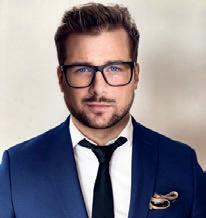
Finland


As Finland and Hungary celebrate the centennial of diplomatic relations, Finnish Ambassador to Hungary Markku Virri tells Diplomacy&Trade about the unique bilateral relationship rooted in a shared linguistic identity. Built firmly on extensive cultural and person-to-person relations, the cooperation between Finland and Hungary covers all walks of life, but the diplomat notes that reviving the once vibrant Finnish corporate activity in the country is a key priority.
see articles on pages 8-12




Education and direct support

The Startup Campus (SC) Hungary Powered by HEPA program that promotes the internationalization of Hungarian inventions, innovative businesses and startups through partnerships has recently been expanded with five more partners to support the launch of Hungarian startup companies. One new partner is the National Research, Development and Innovation Office whose aim is to provide financial support for the innovation journey. see more on page 14
CHARGING AHEAD
CORPORATE CONTRIBUTIONS TO THE DEVELOPMENT OF E-MOBILITY IN HUNGARY





















SEE MORE on pages 16-21

MARCH 2020 HUF 1710 EUR 6
dt 2020march.indb 1 2020. 03. 16. 11:43
















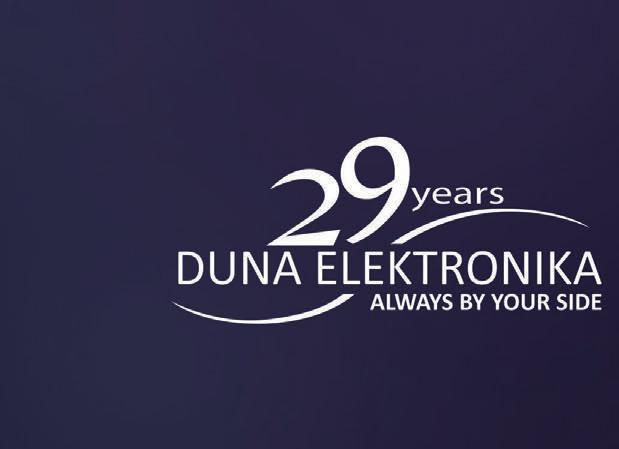



dt 2020march.indb 2 2020. 03. 16. 11:43
Caffè? Solo con Giotto! FOR EXTRAORDINARY COFFEE MOMENTS.































































































































































































































































































































































































































































































































Experience a new praline speciality inspired by an Italian recipe from . Giotto’s creamy hazelnut filling in a delicate layer of crunchy wafer covered with hazelnut pieces turns every coffee moment into an extraordinary one. Enjoy Giotto with friends or as a delicious treat for yourself. You can even have it without coffee – but never have a coffee without Giotto.












Giotto_Ad_280x260_RZ.indd 1 24.02.20 15:00 dt 2020march.indb 3 2020. 03. 16. 11:44
letter from the publisher
Still a long way to go – says our automotive expert when describing the proportion of electric cars in Hungary vis-a-vis Europe in general. However, as you can read about the developments in our e-mobility section, the sales of such vehicles are on the rise – even if not at a desirable pace –along with the charging infrastructure required.
Our focus country in this March issue is Finland, a Finno-Ugrian language relative of Hungary, as the two countries celebrate the centenary of diplomatic relations. In an exclusive interview, Finnish Ambassador Markku Virri speaks of this and evaluates the recent Finnish Presidency of the Council of the European Union. The Focus covers Finland’s achievements in environmental issues such as climate protection and clean technologies, and the country’s Minister of European Affairs emphasizes Finland’s strong commitment to the EU. We also talk to the cultural institute Finnagora about their projects in Hungary.
The impeachment procedure against President Trump failed but could have political implications in November. The question, our international affairs analyst says, is whether the accusations and the unanswered, politically potentially damaging and/or sensitive issues for the President and the Republican Party will still be on the minds of voters when they enter the election booths on November 3.
A complete value chain has been created to support Hungarian startups in foreign markets as a program powered by the Hungarian Export Promotion Agency has recently been expanded with five more partners. Our business page features one of these new partners.
The WittyLeaks column is on soccer as the Ambassador of the Czech Republic to Hungary is an avid football fan who describes the animated atmosphere among supporters at lower level matches in Budapest. As a recent study indicates, people are considering health-related issues when choosing wines. Our wine page introduces a Hungarian winery that produces a whole spectrum of varieties of vegan wines. While cases of the Covid-19 coronavirus are just starting to appear in Hungary, surely we will not be left without significant impact. Please check our online edition at dteurope.com for updates.
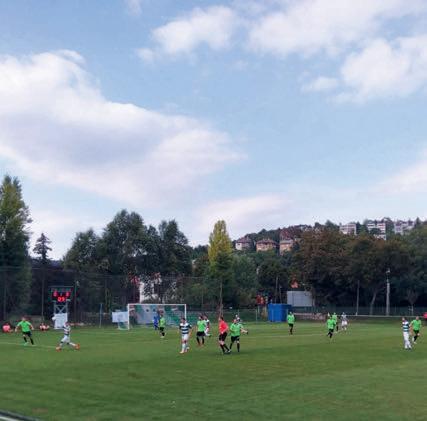 Peter Freed PUBLISHER
Peter Freed PUBLISHER

cont en ts
05
08-12 FINNISH FOCUS
Interview with the Finnish Ambassador to Hungary, Markku Virri; Article by the Finnish Minister for European Affairs and Ownership Steering; Finnrelax; FinnAgora
13 ANALYSIS
The impeachment procedure is over but could have political implications in November
14 BUSINESS Startup Campus
15 WITTYLEAKS by the Ambassador of the Czech Republic
16-21 E-MOBILITY
Electric cars beckon new era in mobility worldwide; E-ON Hungária; TÜV Rheinland

22-23 SOCIETY
24-25 WHAT’S ON Concerts, festivals, events and exhibitions in and out of Budapest
26 GASTRONOMY
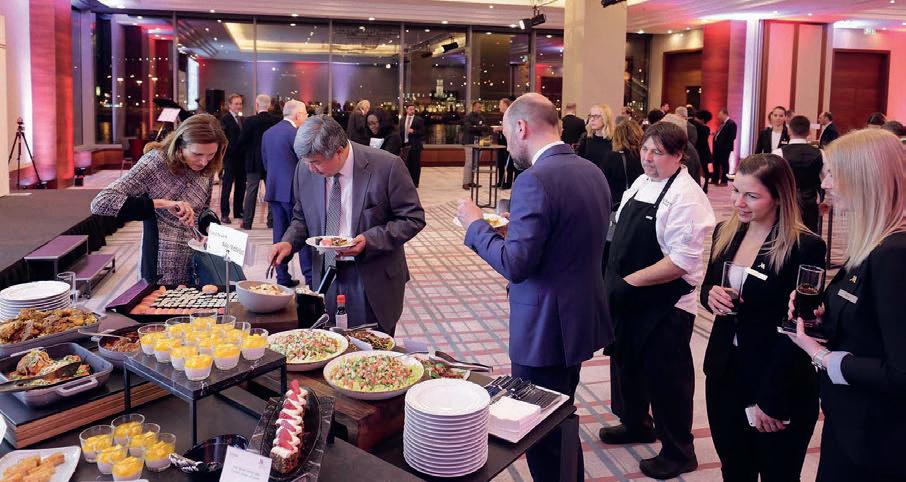
27 WINE Vegan wines

PUBLISHER: Peter Freed EDITOR: Sándor Laczkó COPY EDITOR: Joyce Freed
PHOTO EDITOR: Dávid Harangozó
SALES & MARKETING DIRECTOR: Tamás Varga DISTRIBUTION MANAGER: Tibor Ocsenás


ADMINISTRATION: Éva Madarász ASSISTANT: Ágnes Rapaport
CONTRIBUTORS: Sándor Laczkó, Tamás Magyarics, Edith Balázs, Réka A. Francisck, Tibor Bial
PHOTO CONTRIBUTORS: depositphotos.com (Cover), National Research, Development and Innovation Office (Cover), László Vizsy/US Embassy, depositphotos.com, Hungarian Swimming Association, BKP/Wikimedia, Colliers International, MOL Group, Győző Dósa/www.beloved.hu, Laura Kotila/Prime Minister's Office, National Research, Development and Innovation Office, Tibor Bial, Péter Fáth, Enikő Bianka Dancs, Live Nation, Banksy, Bodies, Emese Kiss, László Emmer, Benjamin Kiss, Shervin Lainez, Wineglass Communication, PIXELTASTER, Tamás Rizsavi, Barna Burger, MTI
SWISS FOCUS - COMING SOON
Diplomacy & Trade is preparing a special Focus section on Switzerland as the Swiss-Hungarian Chamber of Commerce celebrates its 25th anniversary in 2020 with a series of events throughout the year. In an extensive interview, the Swiss ambassador to Hungary, Peter Burkhard highlights some of the aspects of successful bilateral relations. We also look ahead to the annual Swiss Business Day and cover some of the numerous Swiss companies in Hungary. According data by the National Bank of Hungary, Switzerland is the 5th largest investor in Hungary with about 5% (that is, over EUR four billion) of the total amount of FDI in Hungary coming from the Alpine country. Also, in 2020, the two countries celebrate the 125th anniversary of the birth of Carl Lutz, the Swiss Vice-Consul who rescued tens of thousands of Hungarian Jews from certain death during World War II.
 Photo: Zsolt Czeglédi, Tibor Rosta, János Vajda, Zsolt Szigetváry
Photo: Zsolt Czeglédi, Tibor Rosta, János Vajda, Zsolt Szigetváry
MARCH 2020 |DIPLOMACY & TRADE| www.dteurope.com 4 Copyright 2004-2020 DUAX Kft., all rights reserved ISSN 1589-8075 This magazine is produced by DUAX Kft. The opinions published in the magazine do not necessarily reflect the opinions of DUAX Kft. photos by WINEGLASS COMMUNICATION, DÁVID HARANGOZÓ, TIBOR BIAL, DEPOSITPHOTOS.COM We welcome inquires for advertising in this issue. PLEASE CALL TAMÁS VARGA FOR FURTHER INFORMATION +36 209 350 250 - tvarga@budapestweek.com AND DON’T FORGET monthly in print - daily on the web www.dteurope.com
COPIES ARE AVAILABLE AT SELECTED RELAY AND INMEDIO OUTLETS IN MAJOR HUNGARIAN CITIES. NEWSSTAND PRICE: HUF 1,710 or EUR 6 - Subscriptions are available for an annual fee of EUR 72 in Hungary, or EUR 90 to all other destinations. SEND REQUESTS AND INQUIRIES TO DUAX KFT. H-1034 Budapest, Bécsi út 60. TELEPHONE [+36-70] 320-3051 | FAX [+36-1] 350-5660 E-MAIL editor@dteurope.com ADVERTISING adsales@dteurope.com
ON THE RECORD
BRIEFS
06-07 COMPANY
page 23
Ambassador Summit –an evening of gastronomy and hospitality
Pitch-side memories as soccer brings people together page
15
dt 2020march.indb 4 2020. 03. 16. 11:44
Vegan wines from the Great Hungarian Plain page 27
HUNGARY’SPOPULATION FALLSUNDER9.8MILLION
The estimated number of the resident population calculated on the basis of the 2011 census and taking into account international migration was 9 million 769 thousand at the end of 2019, according to a February report by the country’s Central Statistical Office. It is the result of a natural decrease of 40,400 people (89,200 live births vs. 129,600 deaths) compared to the end of 2018 – a figure two percentage points better than in the previous year.
Detailed numbers say that 89,200 children were born in 2019, 607 fewer or 0.7% lower than in 2018. The number of newborns was lower in January-March, June and October, higher in April-May, July, September and NovemberDecember and was the same in August, compared to the corresponding periods a year earlier. The most significant increase of 8.2% was registered in December and the largest decrease of 5.8% in June.
The estimated total fertility rate was 1.49 per woman, the same as calculated for 2018. Therefore, the intention of childbearing has not changed; the number of live births has declined due to the fall in the number of childbearing age women.
There were 129,600 deaths, 1.1% lower or 1,445 fewer deceased than a year earlier. The number of deaths increased in January, February and June, while in all other months of the year, fewer people died than in the same months of 2018. The largest increase of 20% was registered in the first month of the year, which may have been due to a flu epidemic that peaked earlier compared to 2018. The most significant decline of 14% was recorded in March, and in December notably fewer people also died (8.1% less).
FULBRIGHTSCHOLARSHIP PROGRAMTOEXPAND
The funding for the Hungarian-American Fulbright scholarship program will increase from the current HUF 250 million (EUR 740,000) to HUF 400 million (EUR 1.2 million) by 2022. The increase is due to the Hungarian government raising its contribution to the same level as that of the United States: from HUF 50 million to 200 million.
“It is characteristic of the effectiveness of the Fulbright program that 60 Nobel Prize winners have taken part in it. On Hungary’s part, four former ministers and twenty former

on the record
ambassadors received funding from the program”, Zsigmond Perényi, State Secretary for European Union Development Projects at the Ministry for Innovation and Technology stated.
“In addition to political relations, this program also contributes to reinforcing social relations between the two countries”, he added.
Deputy Chief of Mission at the U.S. Embassy in Budapest, Marc Dillard emphasized that Hungarians and Americans who receive scholarships study in each other’s countries, and during the course of their studies, they “fall in love” with the host country and further reinforce relations between the two peoples. He pointed out that the United States provides USD 850,000 in contributions towards the joint scholarship program, and thanks to increased funding by the Hungarian government, the total annual funding available for paying tuition fees and grants will increase to over USD 1.5 million by 2022. He recalled that the scholarship program was launched following the Second World War in the interest of reinforcing stability. It has afforded scholarships in Hungary since 1987, and the two countries have operated the program jointly since 1992, he explained.
The Director of the Fulbright Hungarian-American Commission for Educational Exchange, Károly Jókay said that thanks to the increased funding, the organization will be able to provide more competitive scholarships, and the waiting list for applicants will become shorter. “In addition, we will be able to increase the tuition fee budget for Hungarian students traveling to the United States by one third”, he said. He drew attention to the fact that thanks to the increase in contributions, including those from institutions, universities and the Hungarian Academy of Sciences, it will be possible to increase the number of annual scholars from the current 40 to over 60 by 2022.
UPCOMING NATIONAL DAYS
March 1 Bosnia&Hercegovina National day
3 Bulgaria National day
6 Ghana Independence day
15 Hungary National day
17 Ireland National day
20 Tunesia Independence day
21 Namibia Independence day
22 Morocco Independence day

25 Greece National day
April
17 Syria Independence day

18 Zimbabwe Independence day

27 South Africa Freedom day

30 Netherlands National day
May 3 Poland National day
17 Norway National day
25 Jordan Independence day
26 Georgia National day
TOURISMFIGURES ONTHERISE
The number of nights spent by international tourists in Hungary increased by 13% and that of nights spent by domestic tourists decreased by 3.4% in December 2019 compared to the same period of the previous year in commercial accommodation establishments (hotels, boarding houses, camping sites, bungalows and community hostels). Latest figures by Hungary's Central Statistical Office suggest that total gross sales revenues rose by 16% at current prices in commercial accommodation establishments. In 2019, the number of tourism nights increased by 0.8% and gross revenues by 8.8% in commercial accommodation establishments compared to 2018. In December 2019, compared to the same month of the previous year, the number of international tourist arrivals increased by 15%. 453,000 guests spent nearly 1.1 million tourism nights in commercial accommodation establishments. The number of the latter significantly increased in each type of accommodation except for bungalows. Eight out of ten international tourism nights were registered by accommodation establishments in the Budapest-Central Danube region – 15% more than in the same month of the previous year.
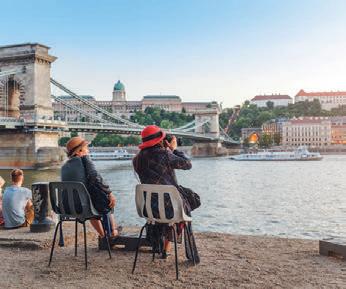
HUNGARIAN PEACEKEEPERSLEAVEFOR KOSOVO
A send-off ceremony was held this February at Kossuth Square in Debrecen, eastern Hungary, for the 22nd contingent of the Hungarian Defense Forces' KFOR (Kosovo Force) Corps before their departure for the Balkan country. From March, the Hungarian soldiers will serve for six months as part of the international peacekeeping force under NATO command, with the task of maintaining order and security in Kosovo.
The backbone of the nearly 400-strong contingent is made up by the soldiers of the 39th Battalion of the 5th István Bocskai Infantry Brigade. Therefore, it was a special experience for them that their send-off ceremony did not take place between the walls of the barracks but in the very center of the city of Debrecen. In his speech, Brigadier General Balázs Szloszjár, commander of the 5th István Bocskai Infantry Brigade, pointed out that “twenty years ago, the second shift of the KFOR Contingent of the Hungarian Armed Forces, including soldiers from Debrecen, stood here to begin their first mission in Kosovo. Therefore, this ceremony is also a nice anniversary.”

He added that after nearly four months of training, the soldiers were ready for the foreign service they are facing. "I assign to you the task of carrying out your duties with the dignity and discipline of the 5th Bocskai István Bomber Brigade of the Hungarian Armed Forces, to prove that Hungary still has the best soldiers in the world." The 22nd change of the Hungarian KFOR Contingent, headed by Major István Petruska, takes over the six-month external service this March.
HUNGARIANNAMEDOPEN-WATER SWIMMEROFTHEYEAR
Hungary’s Kristóf Rasovszky was voted best open water swimmer at the International Swimming Federation (FINA) in 2019.

The organization said this February that the 22-year-old Hungarian was the best on a year-round performance criteria. The results that earned him the ‘Year’s Best’ title included winning the five-kilometer race gold medal at the world championship in South Korea, which was the first Hungarian world title in the history of this sport, a fourth place finish in ten kilometers and a sixth place in team competitions, as well as the overall World Cup victory.
This is Rasovsky's second major individual recognition for the last year. Most recently, he was voted the best swimmer by the European Swimming Federation (LEN). In the women’s field, Hungary’s Katinka Hosszú, 2019’s best female swimmer in the LEN vote and also the FINA winner in 2018, finished second behind Sarah Sjöström of Sweden in the 2019 FINA competition.
In addition to the trophies, the winners will receive rewards of USD 10,000, most probably at the gala following the world short-course championships in Abu Dhabi in December. The award gala had originally been planned for Moscow but had to be canceled due to the World Anti-Doping Agency’s decision against Russia.
www.dteurope.com |DIPLOMACY & TRADE| MARCH 2020 5 photos by DEPOSITPHOTOS.COM, LÁSZLÓ VIZSY/US EMBASSY,
ASSOCIATION
ZSOLT CZEGLÉDI/MTI, HUNGARIAN SWIMMING
dt 2020march.indb 5 2020. 03. 16. 11:44
company briefs
MERCURE BUDAPEST KORONA, HOTEL OF THE YEAR IN HUNGARY
The Association of Hungarian Travel Agencies (MUISZ) has chosen the Mercure Budapest Korona as Hotel of the Year, the Hungarian news agency MTI reports. The 30-year-old hotel is being completely renovated, with the two-year process to be completed in April this year, the company said.
The Mercure Budapest Korona is owned by Orbis, Poland's leading hotel group, representing Accor's brands in the region. With 412 rooms and more than 100 employees, it is located in the downtown area of the Hungarian capital. The hotel operates at an annual occupancy rate of over 80%. The renovation will cost HUF billions but the exact amount is treated as a business secret.
Accor's EBITDA (earnings before interest, taxes, depreciation and amortization) for the first half of last year increased by 5.1%, the third quarter revenue rose by 10.9%, and is expected to continue to further grow steadily.
The Mercure Network is a non-standardized mid-range brand from AccorHotels. As the world's leading hotel operator, AccorHotels has 3,600 hotels, 460,000 rooms and 170,000 employees in more than 92 countries. Mercure has a network of 747 hotels in 55 countries worldwide.
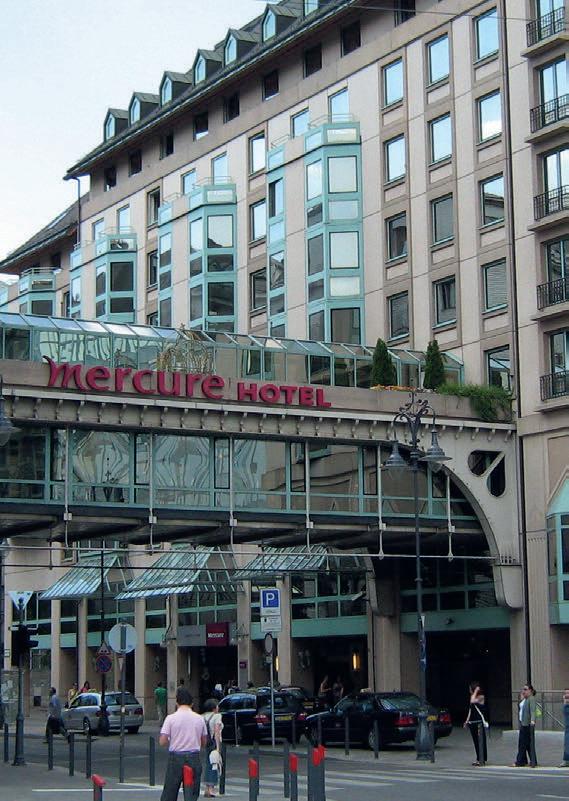
IIPAY TO OPEN EMEA HUB IN BUDAPEST

Integrated International Payroll (iiPay), the cloud-based market leader of global payroll and technological services, has chosen Budapest for the location of its center serving the EMEA region (Europe, Middle East and Africa). Initially, the office of 60 associates will provide operative tasks in English, German, Polish, Spanish and Italian languages, but short-term plans feature expansion of the service portfolio. iiPay is a service-driven payroll provider built on innovative and patented SaaS-based technology. The iiPay system enables quick data management and supports the integration of business intelligence in payroll. The services of the US-based company enable the centralization of processes and the simplification of payroll systems, at the same time ensuring compliance with the prevailing law in all countries, where it has clients and associates. Currently, iiPay that provides comprehensive, global payroll services for 70 clients in 170 countries worldwide closed the previous year with over 60% growth both in regard to the number of clients and earnings. As part of the company's expansion strategy, Budapest was selected as the location of its hub serving the EMEA region. iiPay targets the establishment of 60 new workplaces in the first half of 2020 in Budapest primarily in the field of client implementation and operative tasks. According to plans, the office will also facilitate support functions, like human resources, recruitment, sales and marketing, as well as information technology and product development in the near future.
A report by the Hungarian Investment Promotion Agency (HIPA) points out that the business services center (BSC) industry is one of the most dynamically growing sectors in Hungary today. Currently, some 120 such centers operate in Hungary, employing over 55,000 people. Employees typically belong to generation Y (born between 1980 and 1999), speak foreign languages and have university degrees. Due to the high salary, quick promotion opportunities and the possibility to use foreign languages, this sector attracts many young people with university degrees: 78% of employees have university or college degrees and the average age is 32 years. The centers primarily provide financial, IT, HR and customer service support regionally and globally as well as contribute, to a great extent, to retaining the highest possible number of talented and well-educated young people in Hungary.
GREEN COURT OFFICE REACHES
65% OCCUPANCY
Codic Hungary closed a very successful year in 2019 by securing an anchor tenant who will lease 11,300 m² in the Green Court Office building, due for completion in Budapest in early 2022. With this transaction, Codic Hungary’s latest development will reach 65% occupancy of its office spaces only seven months into construction.
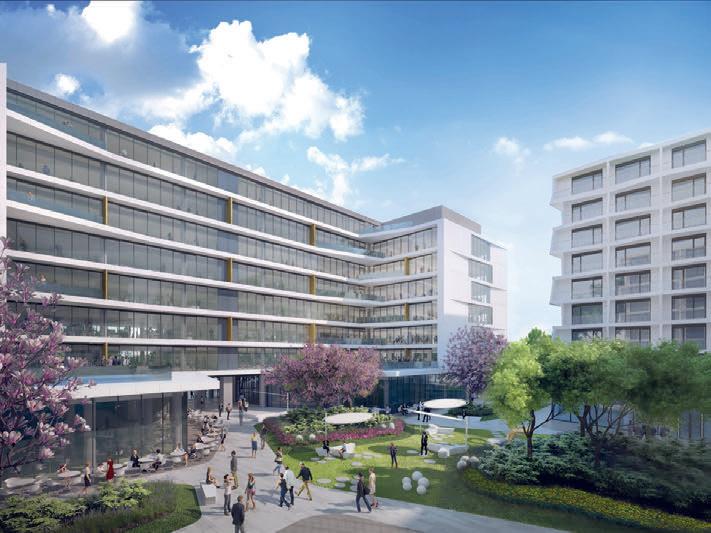
The tenant, a multinational company, market leader in alcoholic beverages, has signed a long-term commitment for 11 years to Green Court Office, which shows the company’s trust in Codic to deliver a high quality sustainable product in a way that meets the most diverse needs of its customers.
“We are very proud that such a significant, globally recognized company chose Green Court Office. Our new development ticked all the key boxes including a quiet, but prime location only a step away from Váci Road and the metro station, modern and inspirational work environment, private southoriented terraces overlooking the garden, wide range of
LINAMAR BEGINS ELECTROMOBILITY IN BÉKÉSCSABA
Canadian automotive company Linamar establishes its European electro-mobility center in southeast Hungary. The partially-independently developed electric powertrains of the firm will be manufactured in Békéscsaba for premium category cars. The two units (located in Orosháza and Békéscsaba), involved in the EUR 78 million investment program, will create 250 long-term, competitive jobs in the coming years.
The 50+ year-old Canadian group's operational areas, among others, include the manufacturing of automotive and mobile industrial equipment and the production of light, heavy and other vehicles. Linamar Corporation has 61 factories, ten R&D centers and 25 commercial offices in 17 countries across North and South America, Europe and Asia.
Linamar has three units in Hungary: in Orosháza, Békéscsaba and Gyöngyös, giving work to more than 2,600 people as an active member of the dual training system. The newly built production hall in Orosháza will give a significant push to the manufacturing of aerial work platforms and self-propelled scissor lifts, creating a hundred new jobs.
At the same time, the manufacturing of electronic powertrains, as a new activity in Békéscsaba, is another significant step towards a stronger electro-mobility sector in Hungary. Production in the newly built, 10,000 m² factory will provide long-term work to 150 employees, relying on the latest technologies.
amenities and sustainable design. Codic is working closely with the future tenant to create an office environment tailored to their specific needs, which includes a dedicated lobby area, fitness facility and cafeteria on the ground floor,” the Managing Director of Codic Hungary, Christophe Boving said. Green Court Office has another 6,200 m² of office space for rent, as well as 1,000 m² of space dedicated to services, a restaurant and shops. “The area around the crossing of the Váci Road and the Dózsa György Road is becoming a real office hub and, in fact, an extension of the central business district, with many new office developments. Green Court Office enjoys the benefit of great visibility, prime location and excellent public transport connections to metro line 3, tram and trolleybus. Tenants appreciate these facts and we were very happy to represent the developer on such an exciting project,” noted Tim Hulzebos, Managing Director for Colliers International that advised Codic Hungary in the deal.
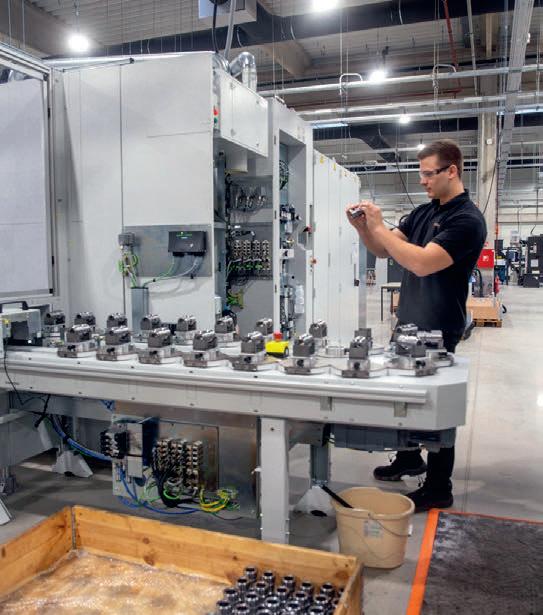
MARCH 2020 |DIPLOMACY & TRADE| www.dteurope.com 6
photos by BKP/WIKIMEDIA, DEPOSITPHOTOS.COM, TIBOR ROSTA/MTI, COLLIERS INTERNATIONAL
dt 2020march.indb 6 2020. 03. 16. 11:44
company briefs
NATIONAL BANK JOINS RESPONSIBLE BANKING INITIATIVE
In line with its Financial Stability Council’s decision, the National Bank of Hungary (Magyar Nemzeti Bank, MNB), as a supporting party, will endorse the UN’s Environmental Program, Finance Initiative’s Principles for Responsible Banking Principles. By endorsing the Principles, MNB seeks to encourage as many banks in Hungary as possible to become signatories of the Principles, which are aimed at fostering environmental protection, social sustainability and responsible corporate governance.

OUTLOOK
The Hungarian oil and gas giant MOL Group has announced its financial results for 2019. The report says that despite the much challenging and volatile external environment at the end of the year, MOL Group generated USD 598 million Clean CCS (current cost of supply) EBITDA (earnings before interest taxes depreciation and amortization) in the fourth quarter, bringing full-year Clean CCS EBITDA to USD 2.44 billion, above its recently upgraded guidance. Simplified free cash flow declined compared to 2018 as the company is pushing forward with its strategic transformational projects but remained positive in 2019 at USD 356 million.

Chairman-CEO Zsolt Hernádi commented by saying that “we delivered robust financial results in 2019, even slightly ahead of our upgraded EBITDA guidance despite a weaker external environment. We also achieved important milestones along our 2030 transformation journey. We agreed to acquire major upstream assets in Azerbaijan, we have reached 50% completion at our flagship polyol project, while our Consumer Services business had another record-breaking year. With our strong foundations and despite increasing global uncertainties, we look forward to 2020 with optimism.”
An investor presentation by MOL Group, also published this February, points out three strategic goals: (1) becoming a true consumer goods retailer (its current EBITDA on this field is USD 471 million); (2) digitalizing customer interactions and operations (with the target being digitalizing for more convenient and personalized offers) and (3) increasing its share in the consumers' spending for mobility services (MOL already has a car sharing service in Budapest with 450 vehicles and the aim is the gradual build-up of mobility services: EV chargers and fleet operations).
According to a communiqué by MNB, this program expects signatory banks to align their own business strategies with the goals of sustainable development, to reduce their socially, environmentally harmful impact emerging through their products and services, and to strengthen their positive effect. To achieve favorable environmental and social impact, credit institutions are expected to consult with their customers, investors and partners and other stakeholders more intensively. All this should be put into practice by applying effective corporate governance and creating the appropriate corporate culture. In addition, the program requires continuous monitoring of the implementation and the revision of the objectives, if necessary. The program requires credit institutions that they sign the Principles to review their business operations within 18 months with UNEPFI experts who may offer assistance in methodology on how to make the most significant impact on the environment. Subsequently, a minimum of two specific targets must be publicly set in consistence with the sustainability efforts, e.g. climate protection. Their progression towards those objectives and the results must also be publicly communicated. An objective, to be formulated, can be for instance, sustainable agriculture or the completion of a specific, realistic, but ambitious task in green energy production funding.
SEGA BECOMES A STRATEGIC PARTNER OF THE GOVERNMENT
The cornerstone of the new production hall of Starters E-Components Generators Automotive (S.E.G.A.) Hungary was laid and a strategic partnership agreement was signed between the representative of the corporation and Péter Szijjártó, Minister for Foreign Affairs and Trade this February. As the 83rd strategic partner of the Hungarian government, SEGA will move to the new production hall in Szirmabesenyő, near Miskolc, NE Hungary, by the summer of 2021, where, in addition to the production, the R&D department will continue to work in brand new laboratories.
Formerly known as Robert Bosch Starter Motors Generators Holding, belonging to the Bosch Group, the division left the German company group with the help of a Chinese investor group in 2018. The new organization, under the name SEG Automotive Germany, continues with the automotive innovation and knowledge accumulated in the field of the manufacturing and development of starter motors, generators, start-stop systems and mild hybrid solutions for more than a century. The company employs more than 8,000 people in 14 countries worldwide.
The Hungarian subsidiary of the group, SEGA, develops and produces automotive products, mainly starter motors and generators in Miskolc as well as in Szirmabesenyő. SEGA produces approximately 9.6 million products a year, and continuously develops and introduces new products. One of the most important of these is the start-stop starter engine developed in Hungary.
In addition to starters and generators, SEGA's R&D team is also involved in the development of Boost Recuperation Machine (BRM) mild hybrid systems, employing over 1,800 people in total. The new production hall of 13,500 m² will hold SEGA’s entire manufacturing process and will include a 4,500 m² laboratory and development area.
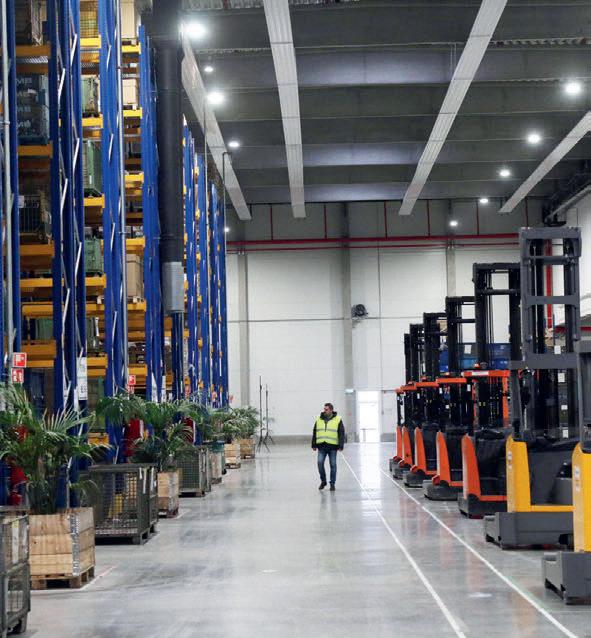
FIRST SEOUL-BUDAPEST CARGO FLIGHT LAUNCHED
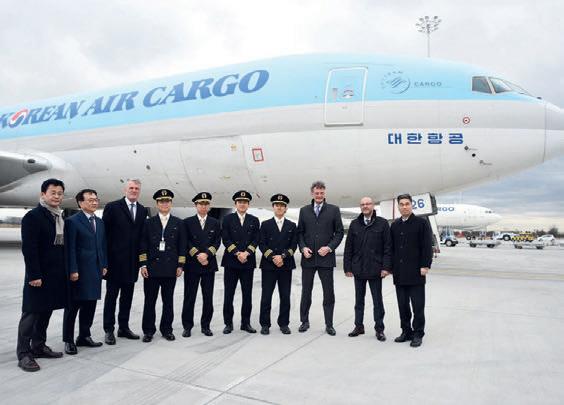
Budapest Airport welcomed the first direct Seoul-Budapest cargo flight when a Korean Air Boeing 777F cargo aircraft arrived at Budapest Airport’s newly opened logistics base on February 20. A press release by the airport management company says this aerial connection is not only an excellent opportunity for the large Korean companies operating in Hungary, but will also constitute a significant competitive advantage for the Hungarian economy in the import-export market. Future flight will commute on the Seoul-Budapest-Frankfurt-Seoul route twice a week. On May 23 this year, the carrier will also launch a passenger flight to the South Korean capital, which will operate three times a week during the summer schedule. South Korea became the largest investor in Hungary last year. The factories of numerous companies significant from the perspective of air cargo, such as
Samsung Electronics, Samsung SDI, Hanon Systems, SK Innovation and Doosan, are located at a transportation distance of just 1.5–2 hours from the BUD Cargo City. The new flight will provide new, efficient and high-quality transport solutions for these businesses, as well as efficient transportation opportunities for small and medium-sized Hungarian enterprises to Korea and into Korean Air’s entire network, via Seoul. According to Kyoo Sik Choe, the Ambassador of South Korea to Hungary, “Korean Air’s new scheduled cargo flight and the direct Seoul-Budapest passenger service to be launched in May further strengthen commercial and diplomatic ties between Hungary and South Korea... On behalf of the Embassy, we will do everything we can to ensure that these new aerial connections should be successful, for both countries.”
www.dteurope.com |DIPLOMACY & TRADE| MARCH 2020 7 photos by MOL GROUP, DEPOSITPHOTOS.COM, JÁNOS VAJDA/MTI, GYŐZŐ DÓSA/WWW.BELOVED.HU
MOL GROUP: 2019 RESULTS AND 2020
dt 2020march.indb 7 2020. 03. 16. 11:44
AUNIQUERELATIONSHIPBUILTONA SHAREDIDENTITY

INTERVIEW WITH THE FINNISH AMBASSADOR TO HUNGARY, MARKKU VIRRI

Rooted in a shared FinnoUgric identity, Finland and Hungary share a one-of-a-kind relationship that even occasional political differences fail to overshadow, the Finnish Ambassador to Hungary Markku Virri tells Diplomacy&Trade in an exclusive interview. As the two countries mark the 100th anniversary of establishing diplomatic relations, the focus shifts to reviving the once substantial Finnish corporate presence in Hungary, according to the Ambassador.
BY EDITH BALÁZS
Relations between the two countries have a very long tradition going back to at least the 19th century and are grounded in the shared Finno-Ugric language identity, the diplomat notes. “This was the foundation on which cultural and later political and economic relations were built between our two nations. I do not say countries because Finland became independent only in 1917. Nowadays, EU membership defines our political relations to a large extent even on a bilateral level because a lot of the items on the EU agenda are dealt with in bilateral meetings. Of course, there is always room for improvement and I believe that relations between our two parliaments could be tightened further. I would like to see more interaction, exchange of views and visits on that level,” Markku Virri says.
8 MARCH 2020 |DIPLOMACY & TRADE| www.dteurope.com
photo by DÁVID HARANGOZÓ FACTS COMPARED HUNGARY FINLAND AREA 93,028 sq km 338,145 sq km country comparison to the world 111 66 POPULATION 9,825,704 (July 2018 est.) 5,571,665 (July 2020 est.) country comparison to the world 92 116 POPULATION GROWTH RATE -0.26% (2018 est.) 0.3% (2020 est.) country comparison to the world 214 171 BIRTH RATE 8.9 births/1,000 population (2018 est.)10.6 births/1,000 population (2020 est.) country comparison to the world 206 186 LIFE EXPECTANCY AT BIRTH 76.3 years (2018 est.) 81.3 years country comparison to the world 88 33 NET MIGRATION RATE 1.3 migrant(s)/1,000 population (2017 est.)2.6 migrant(s)/1,000 population (2020 est.) country comparison to the world 58 40 GDP - PER CAPITA (PPP) USD 29,600 (2017 est.) $44,500 (2017 est.) country comparison to the world 68 38 UNEMPLOYMENT RATE 4.2% (2017 est.) 8.5% (2017 est.) country comparison to the world 54 121 TELEPHONES - MOBILE/CELLULAR 12,030,940 (2017 est.) 7.15 million country comparison to the world 75 105 AIRPORTS 41 (2013) 148 (2013) country comparison to the world 103 38 Source: CIA World Factbook dt 2020march.indb 8 2020. 03. 16. 11:44
finnish focus
Constructive dispute resolution
Finland’s decision to move forward with the Article 7 proceedings concerning Hungary during the Finnish EU presidency in the second half of 2019 and the Nordic country’s commitment to linking European Union funds to the implementation of rule of law have drawn criticism in Hungarian political circles. The European Parliament launched the Article 7 procedures against the Hungarian government in 2018 in connection with the rule of law and democracy in the country. Nevertheless, the Ambassador stresses that the bilateral agenda is not marred by contentious issues and “even when we don’t see eye to eye, we manage to resolve our differences in a constructive manner,” he says. The issues of European common values and rule of law featured very high on Finland’s agenda when the country assumed the EU presidency and Finland considered it a responsibility to continue the work of previous presidencies and ensure that these values were held in respect to the greatest possible extent, according to the Ambassador. “I think that despite some differences between our governments in this field, in the end, we were able to proceed in a very constructive way. The Hungarian government had the opportunity to present its views to all other member states in Council meetings and although, this matter may have shown a kind of dispute between Finland and Hungary, it was not really that simple. During the presidency, Finland was advancing a procedure triggered by the European Parliament. The central role of the rule of law is highlighted in the new Strategic Agenda 2019-2024 adopted unanimously by the European Council and there is also a broad public support for strengthening the rule of law. The proceedings during our EU presidency were dealt with in constructive manner and this hasn’t influenced bilateral relations. The discussions related to enhancing respect for the rule of law issues continue in the EU after the Finnish Presidency.”
Successful EU presidency
Finland’s key priorities during its six-month rotating Council of Europe presidency that ended last December were common values and the rule of law, countering climate change, ensuring sustainable economic growth and social inclusion as well as the comprehensive security of European citizens. “We were able to further discussions within the Union in all four subject matters and we are quite satisfied with that. Naturally, there were a great number of other issues we had to deal with during our presidency, such as the multiannual financial framework (MFF), Brexit, enlargement and the EU’s role in international politics. None of these subject matters can be solved within a six-month period and the Union will need to continue working on them going forward,” Ambassador Markku Virri says. While the diplomat is satisfied with the progress achieved in the field of EU enlargement during his country’s presidency, he stressed that it was unfortunate that the negotiations with Albania and North Macedonia could not yet be opened. The Ambassador is confident that negotiations on the MFF will yield a solution in the course of this year. He also hopes that the bloc will manage to map out the details of future relations with the United Kingdom in 2020. “Fortunately, it seems to me that a similar process of leaving the EU is not on the horizon at the moment, I don’t see signs pointing toward any country following the United Kingdom’s
example. My understanding is that there is no other EU member state where dissatisfaction with the EU reaches the level that would warrant leaving the union. Nevertheless, we should not be naïve and complacent in this area,” according to Markku Virri.
Declining corporate presence
In terms of economic relations, there is plenty of work still to be done, the Ambassador says. Although trade figures have been quite positive over the past decade, there is definitely room for further growth, especially with regard to Finnish exports to Hungary, he notes. While Hungarian exports to Finland surged from EUR 252.8 million in 2010 to EUR 436.8 million in 2018, Finnish exports have essentially stagnated in the period, statistics show. Exports from Hungary to Finland include motor vehicles and machinery and equipment while the most important export items from Finland include processed products (paper and cardboard, iron and steel), machinery, equipment and means of transport. In terms of Finnish investments, the decline in Finnish corporate presence in Hungary compared to the peak period a decade ago is striking. Although there are around 70 Finnish companies present in the country at the moment, this is quite a decrease from the scenario seen in the 1990s and early 2000s. “Following the system change in Hungary, Finnish companies were quick to set up operations in
Hungary, and after Germany, Finland was the second largest investor in the 1990s. Nokia alone used to employ around 15,000 people in Hungary and Elcoteq had 7,000 employees. Nowadays, Finnish companies altogether employ only about 4,000 Hungarians,” the Ambassador says. The reasons behind this are manifold. The leading cause was Finnish companies setting up operations in East Asia, especially China, and focusing their attention on that area. At the same time, some Finnish companies needed to leave Hungary as a result of changes in legislation that soured the business environment and possibilities to operate diminished, the Ambassador says.

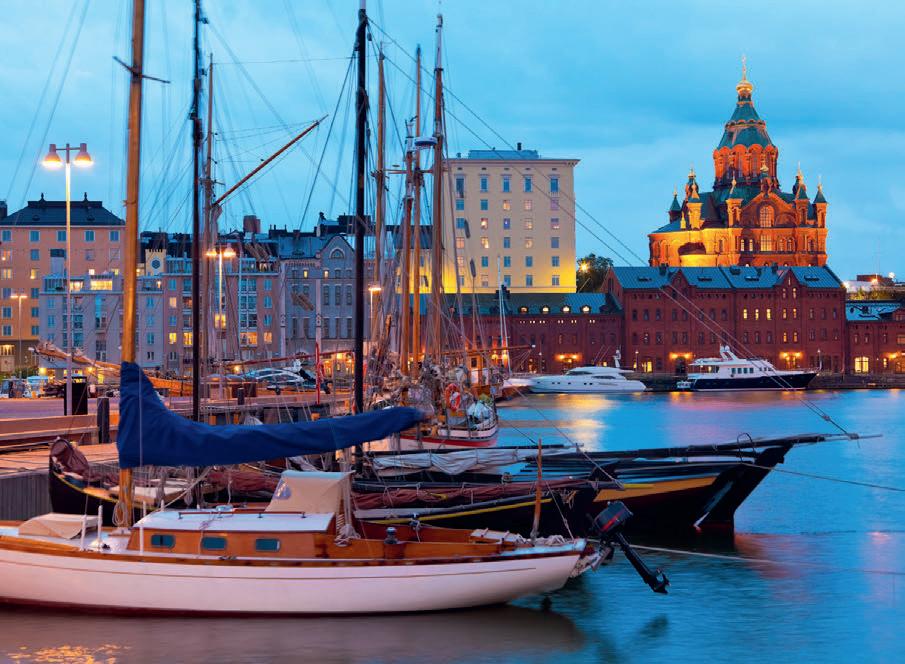
Signs of reviving interest
The two largest Finnish corporations to discontinue production in Hungary were Nokia and Elcoteq. The former has since built a global technology and R&D hub in Hungary in 2017 and is the largest Finnish employer in the country with around 2,300-2,400 employees. This deterioration of the business environment hurt Hungary’s status as an investment destination in certain fields relative to other countries in the region and this can only be partially corrected now as competition is fiercer than it used to be in the early 1990s, according to Ambassador Markku Virri. “Nevertheless, I am seeing signs in the Finnish business community that interest in Hungary is picking up again and this means that some companies may return and new ones may come. The fact that there is still a relatively good chance to get skilled labor here, the salary base remains competitive even compared with many other countries in the region and Hungary’s proximity to the large markets of Europe speak in the country’s favor. There are several fields where we see potential for further cooperation – for example, this January, we organized a seminar on smart city solutions,” Markku Virri says. Lindström’s decision to open a new factory in Kazincbarcika, northeastern Hungary is an example of reviving Finnish interest in Hungary. The development of the Paks nuclear plant is also an opportunity for Finnish companies. There are a lot of similarities in Finland’s and Hungary’s path to nuclear energy; both countries started to build nuclear
plants in the 1970s and the technology used was of the same origin. Finland currently has four nuclear plants, the fifth is set to start operation in 2020 and the sixth is in a phase similar to the Paks project. “As we both use Rosatom technology, it’s quite natural that there should be cooperation in this field. Not to mention the fact that there are numerous Finnish companies that are internationally recognized in the fields of nuclear safety and nuclear waste management. The know-how and experience are available in Finland,” according to the Ambassador whose key ambition is to improve economic relations by boosting trade volumes and investments.
The Finno-Ugric background
Membership in the same language group is a defining factor in bilateral relations, especially on the level of civil society and people-to-people ties. The Ambassador mentions the curious detail of Hungarian musicians moving to Finland and settling there as music teachers. “It started in the 1960s and it has continued since, driven by the boom in Finland of establishing music schools and conservatories, which began in the 1970s. These institutions became very popular, there was a shortage of teachers and the influx of Hungarian professors resulted in a considerable Hungarian music community in Finland.” Aside from the strong collaboration between linguists in the two countries and the exchange of professors and students, there is a quite remarkable network of friendship societies and sister city relations and even sister parish relations fueled by both countries belonging to the same language family. For example, there are more than 50 sister city relationships between Finnish and Hungarian settlements, which translates into a large number of people in both countries who have an above average interest and knowledge about the other country. This also has an impact on tourism, as the number of Finnish people visiting Hungary is on the rise. Finnair operates two flights per day from Helsinki to Budapest year-round and the number rises to three daily flights in the peak tourist season. “The same linguistic origin lends a special and unique character to the relationship between Hungary and Finland that is missing from bilateral relations with other countries,” the diplomat stresses.
Excellence in education
The Finnish education system is often cited globally as a model to be followed. The Hungarian government has planned to modernize the public education system and Finnish education competence could provide assistance in this development. “If the entire Finnish education system were to be adopted by another country, it would definitely not work. Some elements of it could, however, be transplanted into the Hungarian model,” according to the Ambassador. There have been examples of cooperation with Hungarian institutions in the field of education, especially through the Finnish cultural institute FinnAgora. There is an exchange of know-how in the context of various conferences, trips and programs organized for teachers and education professionals. “But this is not a one-way street, we constantly learn from the systems and experiences of other countries. Case in point is the Varga-Neményi mathematics education method, which is widely used in schools across Finland,” Markku Virri concludes.
9 www.dteurope.com |DIPLOMACY & TRADE| MARCH 2020 photos by DEPOSITPHOTOS.COM photo by DÁVID HARANGOZÓ dt 2020march.indb 9 2020. 03. 16. 11:44
finnish focus
FOR FINLAND, THE EU IS A COMMON PROJECT
EUROPEAN UNION MEMBER STATES CAN ACHIEVE MUCH MORE IF THEY JOIN FORCES
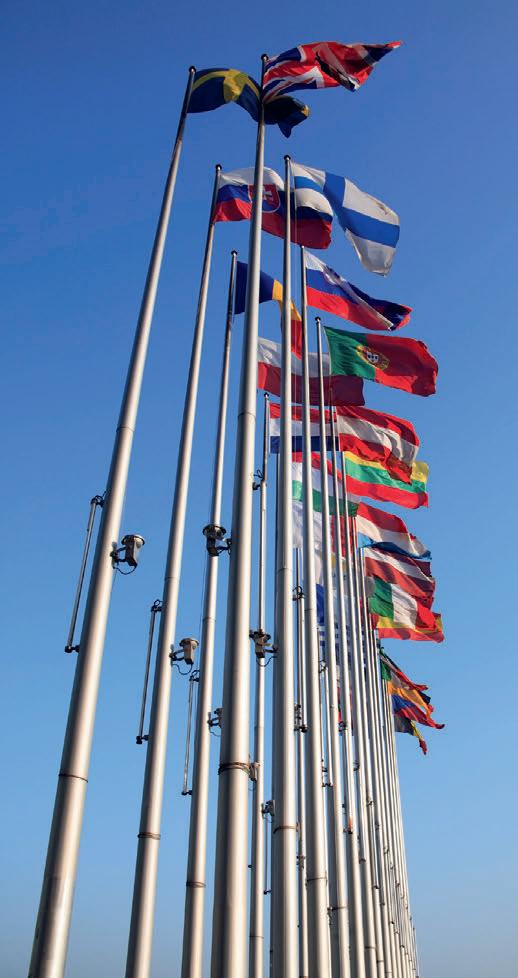
A quarter of a year has passed since Finland held the Presidency of the Council of the EU. Since our Presidency, quite many events have taken place. In these turbulent times, I nd myself returning to the basics, turning my attention to the solid cornerstones of our society and our common Europe.
BY THE FINNISH MINISTER FOR EUROPEAN AFFAIRS AND OWNERSHIP STEERING, TYTTI TUPPURAINEN

What is the best way to sum up the EU? If I had to choose three concepts, they would be democracy, fundamental rights and freedoms, and the rule of law. These are the founding pillars of the European Union and its Member States. Strengthening common values and the rule of law was one of our key priorities during our Presidency and it still is. Our main focus was on developing the EU’s rule of law instruments and strengthening their synergies and here we succeeded.
A matter of trust
For the EU, the rule of law is of central importance. The EU’s raison d’être, like that of its predecessors, is to guarantee peace between European countries and to safeguard human rights within its member states. And the bloc is founded on common values enshrined in its treaties. But defending the rule of law within the European Union is not only about defending a principle – for instance, the principle of a fair trial or the principle of judicial independence. It is also about making sure that our citizens and businesses can fully exploit the many rights and benefits that the European Union provides. This is a matter of trust in daily life. Respect for fundamental values throughout the European Union is also a precondition for the EU to be able to pursue credible global action on behalf of democracy, human rights and equality. They have a strong support of European citizens. These questions have also been strongly addressed by the new Commission in its work program.
Better together
As a unit, the EU Member States are better prepared to face future challenges. Addressing these challenges requires a long-term strategic
program. We were the first Presidency to put into practice the new strategic agenda for the EU adopted by the European Council in June 2019. In these discussions on the future, we were able to set important milestones for the new Commission in areas such as sustainable growth, equality and the welfare economy. We are now beginning to see that the plans of the new Commission are largely in line with our objectives. In this context, I would particularly like to mention the Commission’s communications on the European Green Deal and on building a strong social dimension in Europe in order to achieve just transitions. The Green Deal is more than just a strategy on the environment and climate. We need sustainable growth, and the Green Deal is the Commission’s response to the call for an ambitious and forward-looking growth agenda. We fully support this holistic approach. Better integration of climate policy into all relevant sectors of the economy is necessary if we want to achieve the ambitious 2050 climate neutrality target agreed upon during the Finnish Presidency last December. But we must do it in a way that is socially fair: a just transition is a prerequisite for Europeans’ support for climate action.
For a higher level of prosperity
After all, Europe is for the people. Building a fair and social Europe was an important objective of our Presidency program. In October, the employment and social affairs ministers adopted conclusions on the Economy of Wellbeing, bringing together the elements needed to achieve a higher level of prosperity and wellbeing for Europeans. The Finnish Presidency was also the first to arrange a joint meeting of ministers of finance and education. Money spent on education is an investment in our common future.
The new Commission has also put forth
an ambitious agenda for deepening the social dimension of the EU and investing in people’s skills. I am pleased to see that the Economy of Wellbeing, launched by Finland, is becoming mainstream in the EU.
Promoting equality
This year marks 25 years since the adoption of the Beijing Declaration. In Finland, our Government is run by five politicians, all five of them women. This is by chance, but it still demonstrates that there is room – and also a need for women – in politics. Unfortunately, there has been a global backlash on gender equality matters. The Finnish Government wants to ensure that girls and women are empowered to become active members of their societies and contribute to our common endeavor of creating a better Europe and a better world. Finland promotes gender equality because we see it as a cornerstone of our success story. Our leap from a poor, undeveloped country to a Nordic welfare state was a relatively quick one, less than a century. Making sure to use all our potential, not just half (i.e. men), was one of the secrets to our success. Promoting equality is something we will continue to work for in the EU as well.
Our common project
Lastly, I would like to point out that EU’s ability to act must be safeguarded, and this can only be done with an appropriate EU budget that delivers EU added value. Negotiations on the EU’s future Multiannual Financial Framework for 2021–2027 are still ongoing and reaching their final stages. All Member States are now expected to be able to compromise. Reaching an agreement on the long-term EU budget is particularly important in these stormy times. EU added value cannot always be measured
purely in euros. We can achieve much more together than alone when it comes to climate action and ensuring a just transition to climate neutrality, the Single Market, boosting research and innovation, strengthening defense, implementing European transport and energy projects, digitalization or cooperation in education. This is our common project. This is our common EU. Let’s take good care of it.
10
MARCH 2020 |DIPLOMACY & TRADE| www.dteurope.com photos by LAURA KOTILA/PRIME MINISTER'S OFFICE, DEPOSITPHOTOS.COM dt 2020march.indb 10 2020. 03. 16. 11:44
finnish focus
SUSTAINABILITY AND QUALITY
FINNRELAX INFLUENCES THE DEVELOPMENT OF SPA CULTURE IN HUNGARY

The Finnish company Finn Wellness Ltd. was established in Hungary over 25 years ago and, it is behind Finnrelax, one of the leading spa and wellness brands in the country. The owner of the company, Risto Junttila tells Diplomacy&Trade how the firm has evolved over this quarter of a century.
“In 1994, we started by planning and building tailor-made Finnish saunas. However, after a few years, Finnrelax became known also as the producer of high-quality spa cabins, such as infra, steam, hammam and sea climate. Moreover, our product range includes different types of bio-cabins, as well. We are constantly acknowledging the influence of other countries, mostly the German and Austrian markets, but also considering the characteristics of the spa culture in Hungary. These have given us a reliable perspective on how the trends are changing, for instance, the demands of the Hungarian tourism industry,” Risto Junttila says. The economic crisis of 2008 hindered the industry the time and chance to start thinking more sustainably and

to create higher quality products with longer lifelines, which is not only important for the service provider but for the end user too, he adds.

Sauna culture
When talking about Finland, one of the first things that comes to mind is the sauna. However, that culture is quite distant from that of the Hungarians, for most of whom saunas and related products like spa cabins are not household items. As the Finn Wellness owner sees it, this is slowly changing. “In Finland, we have our ‘own’ Finnish sauna and the culture of using it in our everyday life: at home, in the summer cottage, in swimming halls, in hotels etc. Nowadays, other products, such as infra and steam cabins, are slowly appearing, as well.”
Hungary is extremely rich in thermal water, which was noticed by the Romans and the Turks. This heritage provides a great opportunity for the country to continue developing its bathing culture, as well as to exploit it for enhancing the tourism industry, he says.
Technogym
Finn Wellness Ltd. has also been the exclusive distributor of Technogym equipment and solutions in Hungary since 2005. Risto Junttila stresses that they were lucky enough to join the equipment company at a time when the fitness and wellness industry started developing globally and grew into one of the most rapidly rising industry segments. “Performing physical activities is essential and fortunately, it is becoming popular because the value of health and wellbeing is more and more recognized. Hungary is still a bit behind in understanding the importance of this but the market is growing. The main focus of our company has always been the home segment but representing a brand like Technogym helps us to enter other segments with ease, such as the hospitality and the corporate world. Technogym has been the exclusive supplier for the Olympic Games since Sydney in 2000 and this summer, it will supply the Tokyo Olympic Games 2020.”

www.dteurope.com |DIPLOMACY & TRADE| MARCH 2020 11 photo by DÁVID HARANGOZÓ
COMPLETE WELLNESS SOLUTIONS FOR YOUR HOME AND BUSINESS Get in touch and we send you our new online catalogue: info@finnwellness.hu www.finnwellness.hu dt 2020march.indb 11 2020. 03. 16. 11:44
finnish focus
EDUCATION AND FINNOVATION
FinnAgora is an independent Finnish cultural and scienti c institute in Budapest founded in 2004 and maintained by a foundation of the same name. e FinnAgora Foundation’s board includes representatives from Finnish cities, universities, politics, culture, business, churches and NGOs. FinnAgora’s mission is to promote awareness and visibility of Finland, Finnish culture, science and business in Hungary and its neighboring regions.
Finnagora, which is one of the 17 Finnish cultural and scientific institutes worldwide, had a double celebration last year: its 15th anniversary and its role in the Finnish Presidency of the EU. As FinnAgora Director Cita Högnabba-Lumikero explains to Diplomacy&Trade, “the main things that we have been working with have always been culture and education. Our most important goal is to keep the contacts between Finland and Hungary alive and strong and also cherish the Finnish Hungarian network we have had for the past, say, two hundred years. It was back in the 1800s that several Finnish artists came and worked here promoting Hungarian-Finnish connections. Hungary’s Balassi Institute has been around in Helsinki for 40 years now and when that was founded, it was clear that likewise, a Finnish cultural institute would be established in Budapest. However, that only happened in 2004.”

Celebrating youngness
She adds that most of the programs during the Finnish Presidency of the European Union were organized by the Embassy with FinnAgora providing cultural programs. “We thought that once we are 15 years old, we have to concentrate more on younger people with the label of ‘youngness’. We decided to promote and help young shooting stars. We have had musicians and other artists coming here.” For example, they brought the circus group SISUS to the internationally recognized Sziget Festival in Budapest. The BRIOSA quartet, a fantastic group of chamber musicians – young girls of 15 to 17
years old from the Sibelius Music Youth Academy in Finland – participated at the Quartetissimo international chamber music festival organized in the Károlyi Castle in Fehérvárcsurgó.
Connecting people
FinnAgora is basically an intermediary organization. As the Director says, it means they connect people. “We are a small organization and we cannot manage the whole process ourselves. We have to find and get people to work together and we have to be the ones that make things possible. Take the 50th anniversary of the 1956 celebrations, for example. In 2016, we brought together the Budapest Opera House and artists from Finland and, as we usually do, we also helped them to get funding for that project as nothing comes for free. Of course, we were not alone in making all this happen – we always try to connect different organizations.”
Finnovation!
Supporting innovation and promoting business connections is not something one would expect from a cultural institute. Cita Högnabba-Lumikero stresses that “we are not a business organization, we are more into finding future networks rather than innovations and startups. The first Finnovation conference we had last June in Budapest was a representative piece of the Finnish innovation model: ideas, structures and actors. We present some of the best practices we have there. Of course, the conference also had the best practices from the Hungarian side.” Participants included larger governmental bodies, corporate actors, startups,
EVENTS ORGANIZED IN STRONG COOPERATION WITH HUNGARIAN PARTNERS
etc. talking about their work, their funding and how they see the future, presenting topics on how to make the young want and dare to venture into this field. ”This was the first such conference, so, we had to make it big and interesting. We are planning to make it an annual event with the next one scheduled for the fall of 2020.”
Taste Finland
Another curiosity brought by Finnagora to the Hungarian public is ‘Taste Finland’. As the Director explains, it has been done for many years as a cooperation with the Finnish Embassy. “We invite companies with some Nordic/Finnish aspects into the courtyard of the Embassy building in May every year. Gastronomy students from Tampere come here and – together with the chef of the Embassy – prepare food that is then sold on the spot and we have a Finnish winemaker in Hungary who sells wine to Finnish restaurants here. Present as well is a Hungarian company that produces Scandinavian bakery goods. We have about 500 visitors coming to this event. It is a good promotion of Finnish cuisine. In addition to gastronomy, the program includes music, some speeches, exhibition in the library, etc.”
Feedback
The Director’s perception is that the topic that the Hungarian audience is most interested in is education. “We have organized several seminars and meetings on this subject with Hungarian partners. We really try to listen to what the audience wants. We also deal with topics like the
freedom of speech, gender equality – these are issues that are well received but it is education that basically everybody takes interest in. The teachers are interested in issues of methodology, the best practices of how they teach in Finland. On this, we work together with teachers. Education is one of the most complicated questions in the world, so best practices are needed and we are proud to present here what we have in Finland.”
Never farewell to Budapest
Cita Högnabba-Lumikero says she loves to live and work in the Hungarian capital and is glad to promote Hungarian-Finnish relations. Her term here expires at the end of 2020 until which time she still has work to do. “One of the best and very positive events is the annual Finnish film festival in Budapest. We just had it this February and in 2021, it will celebrate ten years. The new director of Budapest Film, Tamás Liszka who has been working with us for many-many years, has long been a very helpful partner in this project, as well. It is a quite comprehensive cultural happening. In the framework of the film festival, we also had video arts this year, a rolling sauna last year, etc. to make it a big, sometimes also funny, cultural event. I like the venue, the Toldi cinema. We even moved our office there during the festival, having fun working in the cafeteria on our laptop computers. Next year, as the Finnish Film Days celebrates its 10th anniversary, I might come here as a guest then but during the fall, together with the team, we will start to organize the festival to be hosted by my successor in February,” the Director concludes.
MARCH 2020 |DIPLOMACY & TRADE| www.dteurope.com
12 photo by DÁVID HARANGOZÓ
dt 2020march.indb 12 2020. 03. 16. 11:44
CASE CLOSED, FORGET IT?
BY TAMÁS MAGYARICS
It was a sort of ’national nightmare’ like the Watergate scandal and the ensuing impending impeachment process against Richard Nixon in the early 1970s, but the actual impeachment process in the past few months eroded the public trust not only in President Trump, but also in the political establishment in general, and Congress in particular. It exposed the shallow, and to a large extent, cynical maneuverings of both the Democrats and the Republicans for political gains – in the short term, in the upcoming presidential and congressional elections in November. The whole process justified Alexander Hamilton’s view (Federalist No. 65) that ’abuse of power’, one of the charges brought against President Trump, is strictly a political category. Hamilton’s astute observation was proved correct in all the previous impeachment processes in the history of the United States. Andrew Johnson, Bill Clinton, and Donald Trump each impeached by a House in which their political opponents were (are) in majority; while in other cases, where the suspicion of the ’abuse of power’ emerged (even in the case of, among others, Thomas Jefferson, Woodrow Wilson and Harry S. Truman), the charge was not pursued further. In fact, given this historical tradition, impeachment can arguably be taken as another element in the system of ’checks and balances’. One difference which reinforces the political nature of the whole process is, however, that there is no so-called judicial oversight after the decision made in the Senate, as established in the Nixon v. U.S. case in 1993. Impeachment is, for all practical purposes, sanctioning the betrayal of public trust, and not any specific crime; there is no legal definition of an impeachable act.

’A process leading nowhere’
The House Democrats, especially Speaker Nancy Pelosi, and committee chairs, the actual ’managers’ of the impeachment process, Adam Schiff and Jerrold Nadler did quite a sloppy work despite all the fireworks. They rushed through the process in the appropriate committees and forced a vote in the whole House without making a convincing, let alone, water-proof, case against Donald Trump. (It is another question whether they could have produced one even if they had used all the tools in their hands – such as, for instance, going to court to force individuals to testify when the White House ignored subpoenas issued to them.) Their primary goal seems to have been to extend the attacks on the Republican Party, especially on the representatives and senators in vulnerable congressional districts. The Democratic Party leadership on Capitol Hill was, at the same time, under pressure by the radical left wing (aka progressives) of the Party, which considers the predominantly white and elder officials in the House too moderate and timid to take on the President and the Republicans. In the light of the above, it seemed more than a little disingenuous of the Democrats to expect one of the most astute tacticians of the Senate, Majority Leader Mitch McConnell to come
to their assistance and finish their incomplete job, and call in new witnesses. As was expected by the majority of the observers at the beginning of the whole story, the Democratic members of the House duly played their roles, as did the Republican members of the Senate, and the impeachment led to nowhere. In fact, the House Democrats pledged themselves to carry on investigations after the conclusion of the official process, and as part of a ’Plan B’, they are determined to call further witnesses to testify, foremost among them, former National Security Adviser John Bolton, whose ‘tell-all’ book is about to be published – provided the White House does not prevent it based on protecting the confidentiality and secrecy of certain issues related to the national security of the country.
Imperial presidency
The ‘abuse of power’ by a President in the conduct of foreign and security policy is a rather contested term. The Constitution does not say anything about this power of the President; it was a Supreme Court decision in 1936 (U.S. v. Curtiss-Wright Export Corporation) that established the principle that the President of the U.S. is the ’sole organ’ in the conduct of foreign policy of the country. The concentration of power in foreign and security
policy got a boost during the Cold War with the gradual relative decline of the power of traditional institutions (especially the Department of State) in these fields, and the ’imperial presidency’ was born. While ‘congressional diplomacy’ was also a well-known term in the past decades, nowadays one does not hear too much about it. The guiding line for a presidential action in foreign and security policy is to what extent it promotes the national security of the U.S. The broader question involved in the multiple American pressures exerted on the various Ukrainian governments for the sake of a vigorous investigation into corruption in that country is whether the widespread corruption in Ukraine should be a concern for Washington too, because – by implication – it weakens Ukraine’s ability to resist Russian pressure in almost all walks of life. The Trump administration, no matter whether it was considering initially or not, ultimately did not make the investigation of Burisma or any other Ukrainian company conditional of the financial aid; strictly speaking, the President was, after all, acting in accordance with the overall American strategy of trying to prevent Russia from expanding its sphere of influence in an area which is supposed to be, at least marginally, important for the national security of the United States.
Implications in November?
The second charge against President Trump, ’obstruction of justice’, is again an area where the borderlines are not clearly defined. Presidents believe that, for the public good, they have the authority to prevent officials from testifying before congressional committees, and they can be forced to let the subpoenaed officials travel up the Hill only if a proper court order directs them to do. The House Democrats were in a hurry for political reasons, and they did not resort to this weapon against Donald Trump, who with some right was able to claim that he was acting within the scope of his presidential prerogatives. In fact, a few years back, then President Obama also banned some officials from testifying before Congress in relation to a covert operation against drug dealers in the U.S. So, the impeachment process was closed, but the Democrats would not like the voters to forget about the accusations and the unanswered, politically potentially damaging and/or sensitive questions for the President and the Republican Party when they enter the election booths on November 3rd.
Tamás Magyarics is a foreign policy analyst
analysis www.dteurope.com |DIPLOMACY & TRADE| MARCH 2020 13 photo by DEPOSITPHOTOS.COM
dt 2020march.indb 13 2020. 03. 16. 11:44
IMPEACHMENT FAILS BUT COULD HAVE POLITICAL IMPLICATIONS IN NOVEMBER
EDUCATION AND DIRECT SUPPORT
COMPLETE VALUE CHAIN CREATED TO SUPPORT HUNGARIAN STARTUPS IN FOREIGN MARKETS

The Startup Campus (SC) Hungary Powered by HEPA (the Hungarian Export Promotion Agency) program that promotes the internationalization of Hungarian inventions, innovative businesses and startups through partnerships has recently been expanded with five more partners to support the launch of Hungarian startup companies. One of these new partners is the National Research, Development and Innovation Office (NRDIO) whose aim is to provide financial support in all development phases of the innovation journey – wherever it is possible and needed.
NRDIO provides funding for individual researchers, universities and research institutions, however, the broadest field of support targets business RDI, ranging from startups to large enterprises, according to Krisztián Kölkedi, senior adviser for youth strategy and startups at the organization. He tells Diplomacy&Trade that until last year –relying on international best practices – startup support mainly meant funding the establishment of startup incubators proven to be the most effective in developing the startup ecosystem. However, in 2019, a panel of startup experts was invited by NRDIO to work on a thorough analysis of the startup ecosystem. They proposed 11 action plans where NRDIO could and should provide additional support. The execution of five of these action plans is already underway. These proposals focus on two main areas: education and direct support for early stage startups.
From idea to market
“When it comes to education, we are committed to contribute to the creation of an entrepreneurial culture and a supportive environment for innovators. For those who have a promising idea and the ambition to turn that idea into a business opportunity, we are launching the Hungarian Startup University Program this September with the aim of introducing and nurturing a result-oriented, entrepreneurial mindset in higher education and supporting the establishment of new ventures. During this twosemester e-learning course, university students will work on their ideas with mentors, apply for scholarship to develop their business ideas and, ultimately, have the possibility to pitch in front of investors,” the senior advisor highlights. As for direct support for early stage startups, a new and greatly simplified, startup specific funding scheme is being developed and will be piloted this March. The overall aim of this support is to further mitigate the risks of early stage investors by providing well-targeted funding for startups with high impact and business potential, thus ensuring an integrated financial path for innovators from idea to market. With this, NRDIO is looking to support teams that are currently working on their MVP or prototype, and are likely to secure investment after using the funding from the Office.
Research, development, innovation
Explaining NRDIO’s motivation to join the Startup Campus (SC) Hungary Powered by HEPA Program, Krisztián Kölkedi points out that the Office is very enthusiastic about every endeavor that supports the international market entry of innovative Hungarian
SMEs, and strives to strengthen their presence on global markets. “Since 2018, innovation and the market uptake of innovative solutions is of utmost importance in government. Joining this cooperation means that the NRDIO can be part of a very hands-on approach to getting Hungarian startups from idea to international markets,” he says. NRDIO President Zoltán Birkner pointed out at the signing ceremony that there is close cooperation developing between universities and corporate actors in Hungary. The Office has several means to help enhance this cooperation. In general, more than 50% of NRDIO’s funds are allocated to market oriented, business RDI (research,
development, innovation) projects where there is a corporate main party and cooperation with universities is advocated. As a practical example, the senior advisor mentions that “in 2019, we launched a call for proposals titled ‘University Innovation Ecosystem’ with the aim to establish innovation centers within universities across the country and facilitate an active cooperation between universities and industrial players on the basis of mutual benefits. Universities can highly benefit from the commercialization of their RDI results and can act as a first point of contact for Hungarian enterprises seeking R&D expertise and research infrastructures.”
Reinforcing universities
Cooperation is also developing on regional and international levels. NRDIO started establishing Regional Innovation Platforms to encourage the strengthening of the domestic innovation ecosystem in cooperation with leading Hungarian universities. The key objective is to make higher education institutions, which are traditional knowledge centers, the innovation engines of the given region. “By doing so, we expect to reinforce the universities’ key role in the innovation space and open their gates to local ecosystem actors, providing direct access to locally available innovation services, research infrastructures and resources,” he adds. As a conclusion, the senior advisor points out that providing services tailored to startups and acting as a first point of contact was a request coming from the ecosystem itself. “This is a huge responsibility we have taken on and we are still at the beginning of the journey. We will continue to work closely together with the members of the startup space to receive as much feedback as possible.”
STARTUP CAMPUS (SC) HUNGARY POWERED BY HEPA EXPANDED
At the signing ceremony of the expansion of the Startup Campus (SC) Hungary program, the CEO of the Hungarian Export Development Agency, Balázs Hendrich recalled that in September last year, HEPA and Enterprise Hungary Ltd. launched this program to support the successful entry of Hungarian innovative enterprises into foreign markets. He emphasized that it is an important factor in the Hungarian government's National Export Strategy to increase the presence of domestic SMEs on foreign markets.
The umbrella agreement was joined in December last year by Hello Tomorrow, Hiventures, MVMSmart Future Lab, Tungsram and Valor Hungariae while the new members from this February are state actors: export-import lender Magyar Eximbank; Kézmű Közhasznú Nonprofit, which places people with disabilities in workplaces; the National Research, Development and Innovation Office; the Hungarian Intellectual Property Office, and Millenáris Scientific Cultural Nonprofit Ltd., which operates a cultural and educational center in Budapest.
Gergely Jákli, President and CEO of Eximbank Zrt., said that they are
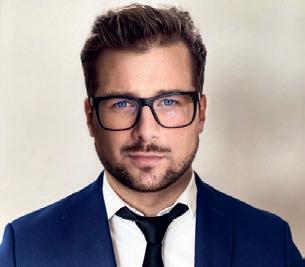
continuously increasing the financing instruments of domestic SMEs in foreign markets, and they are offering startups this opportunity.
Zsolt Kovács, Managing Director of the Startup Campus, which coordinates the cooperation, said that their goal is to encourage young people, startups and to connect different regional ecosystems. Virág Dankó, Managing Director of Millenáris Scientific Cultural Nonprofit Ltd. said that their original intention was to become a spiritual and knowledge center for the future, providing a home, a base and a meeting point for young businesses.
Péter Csízi, Managing Director of KÉZMŰ Nonprofit Ltd., explained that
– together with two partner firms –they employ nearly 9,000 people with disabilities across the country in 13 divisions, serving more than 800 market partners with 22 million products (of 8,700 varieties) a year. Zoltán Birkner, President of the National Research, Development and Innovation Office, said that innovation has risen to a higher level of government since 2018, with close cooperation between universities and industry. Gyula Pomázi, President of the Hungarian Intellectual Property Office, emphasized the importance of the legal protection of intellectual property. He pointed out that the legal protection and enforcement of intellectual property increases a company's market value.
MARCH 2020 |DIPLOMACY & TRADE| www.dteurope.com
14 photos by NATIONAL RESEARCH, DEVELOPMENT AND INNOVATION OFFICE
business
dt 2020march.indb 14 2020. 03. 16. 11:44
witty leaks
WITTY LEAKS
BRINGINGPEOPLETOGETHER
PITCH-SIDE MEMORIES: HUNGARY GAVE GREAT PLAYERS TO THE WORLD OF FOOTBALL
BY TIBOR BIAL, THE AMBASSADOR OF THE CZECH REPUBLIC

Sport connects people and football is an important phenomenon. Besides the excitement of the game itself, it provides a great opportunity to learn more about the history of the city, region and understand more the locals.
Let me start with a short story from my childhood. I had a classmate with whom I played football literally every day and watched hundreds of matches. Of course, we were always competing who is a better player and who knows more about the teams, so we invented our own game: one said a team and the other one had to tell everything about the club and about the city. As we were both huge fans of Liverpool, we usually brought up clubs from Great Britain. Funnily enough, this knowledge helped me to succeed at my English exam at secondary school. The love of this game remained in the heart of both of us. Later, my classmate became a writer and published a book about his stories related to football.
Good old days remembered
Long years ago, during my stay in Hungary, I started to attend local football matches in lower leagues. Once I visited the Pénzügyőr-Méhkerék 3rd league match in Budapest. Méhkerék is a small village in Békés County at the Romanian border with a nice Romanian orthodox church.
Pénzügyőr is an old traditional sport club of Hungarian excise officers and financial officials established in 1930. Its stadium in District II of Budapest offers a nice view of the surrounding hills and a great retro style restaurant. The whole stadium has something magical in its atmosphere. You can easily start a friendly conversation about football, the good old days or any other topic with the fans around you who happen to be former or current officers, directors of Hungarian police, tax office or elderly politicians. Political affiliation does not play a role here – everyone is ‘only’ a football supporter. To this day, whenever I have a free weekend in Budapest and Pénzügyőr plays at home, I love to go there with my wife or friends.
Doubtless, Pénzügyőr has a more successful history than present, but it is important to note that there are several other traditional teams
(BVSC, REAC or Csepel FC) in the 1st tier of Budapest league (fourth level nationally) that played the top Hungarian division twenty years ago. Their matches from those times are still remembered as big derbies – people meet and talk about that glorious past regardless of the teams’ present status.

Great stars of Hungarian football
Hungary is very proud of its football history, especially of the ‘Golden team’, the national side from the 1950s with Puskás, Kocsis, Czibor (later stars of Real Madrid and FC Barcelona), Grosics, Buzánszky and others. That national team was ‘unbeatable’ from 1950 to 1956 with 42 victories, seven draws and only one defeat (in the 1954 World Cup final against Germany). English international Gary Lineker was right in saying that “football is a simple game. Twentytwo men chase a ball for 90 minutes and at the end, the Germans always win.” Later, in the 1960s, Hungary boasted of some more remarkable footballers, e.g. Flórián Albert,
CSETÉNY – FOOTBALL AND GALLOP
the only Hungarian with the prestigious title ‘European footballer of the year’ (in 1967). Another outstanding player, Zoltán Varga, was never as successful as his team-mate Albert, but he was blessed with the same talent. In 1968, he left the country because he did not agree with the communist regime in Hungary. Another exceptional footballer was Károly Zsák – the faithful ‘Skaja’ – whom the Prager Tagblatt (the former Czech ‘Pražský deník’) praised with “we never saw such a goalkeeper as Skaja before.“ Once, he broke his ring finger that, despite the treatment, remained stiff. He decided to have his finger amputated in order to be able to continue playing. And I could go on with the untold stories like the one about Béla Guttmann who started his career in another traditional Budapest club Törekvés SE. Later, as a coach, he had a conflict with the legendary Ferenc Puskás in 1948 and he had to leave Hungary.
In the 1950s-60s, he worked at clubs like AC Milan, Sao Paolo, FC Porto and Benfica and won several championship titles. During his Brazilian
Once I spent a long weekend in Balatonfüred with my wife and friends. As we had a free Saturday afternoon, we went to the Balatonfüred FC – Csetény 1st tier of Veszprém county division (4th league) match. We had never heard about Csetény before, so, when we arrived at the stadium, we tried to find out as much as we could about this village and the region. The result was indifferent – the atmosphere was unforgettable. What’s more, we could easily get a very interesting picture of the surroundings by speaking with the locals. Catchphrases like ‘Beautiful shot, but worth nothing!’ from an unknown supporter we use with our friends till today! Shortly thereafter, we attended the final of the Hungarian National Gallop on the Heroes Square. We got very excited when we saw in the junior final a rider from Csetény! Of course, we immediately started to support her – and to our great pleasure, she won! Then came the international final where Czech Republic had one rider. There we finished only second, but I am sure one round more and we could have won. Well, no problem, next year!
period, he implemented a new tactical lineup, the offensive ‘4-2-4’ that led the Brazilian seleção (national team) to win their first World Cup title ever. Another former Törekvés SE player, Árpád Weisz, also became a well-known coach in Italy. He won the Italian championship four times, once with Inter Milan and three times with Bologna. To this day, he is the youngest coach in Italy to have won the title at least three times. Earlier, as a player in the 1920s, he played in the Czech Republic, in Maccabi Brno. Speaking about the ‘20s, the period between the two World Wars was extremely hard for the football players. I got a very impressive and instructive picture of that world through the stories describing the lives of football players. I will tell you more about this, perhaps next time; other stories that one can hear only at the side of the pitch.
Although Hungarian football is not as successful as it used to be, it enjoys great popularity. Personally, it is a real pleasure for me to see that former good players tend to attend lower league matches, too, not forgetting where their career started. I would also like to mark how inspiring it is for me that there are a few fanatic people among us who manage a local club, spending their free time and money just to run a team that gives children a chance to play football, to learn team work and fair play.
Bringing people together
One of my nicest stories while in Hungary occurred during the European Championship four years ago. That time, I was at the Czech Embassy responsible for business. The Czech – and some of the Slovak –diplomats live in apartment houses sharing a common site. We decided to grill and watch the matches together on a TV in the garden. Hungary played against Austria. Hungary won that very exciting match. I hope our Austrian colleagues will forgive me, but I admit we supported the Hungarian team. After the match, the garden neighbor came to the fence with one bottle of champagne and thanked us for supporting the Hungarian team. What’s interesting about this story is that in our group, there were old diplomats who used to work here even 20-30 years ago. They told us it was to first time the neighbors ever got in touch with them.
This little story describes perfectly the essence of sports: no matter if we participate actively or passively, the important thing is to enjoy it and get close to the people around us.
www.dteurope.com |DIPLOMACY & TRADE| MARCH 2020 15
IN THIS SERIES, DIPLOMATS SHARE PERSONAL ACCOUNTS OF THEIR EXPERIENCES ON “EXCURSIONS” into Hungarian culture, art, gastronomy & scenery.
photo by TIBOR BIAL
dt 2020march.indb 15 2020. 03. 16. 11:44
e-mobility
CHARGING AHEAD
ELECTRIC CARS BECKON NEW ERA IN MOBILITY WORLDWIDE
e Royal Swedish Academy of Sciences awarded the 2019 Nobel Prize in Chemistry to Japanese, British and American scientists for the development of lithium-ion batteries and for creating the conditions for a fossil fuel-free society. e decision of the Academy is testament to the increasing importance of new, environmentally friendly means of transportation worldwide. Nevertheless, electric vehicles as we know them may not be the ultimate solution for a green future.
BY KÁLMÁN DEMETER
Electric cars have been around for over a hundred years; carmakers experimented with vehicles powered by electricity, steam and internal combustion engines in the early days of car manufacturing. The 20th century, however, brought about the hegemony of the latter since even developed countries lacked power grids, which would have been essential for recharging batteries. The first commercially available lithium-ion battery was produced in 1985 and instantly attracted the attention of car industry players as it was lightweight, durable and could be recharged hundreds of times before it started to lose capacity. The battery revolutionized mobile phone technologies and ushered in a new era of electric vehicles. Toward the end of the last century, the auto industry geared up for the serial production of hybrid cars, which were soon followed by fully electric cars.
Are electric cars the solution?
The hybrid vehicle, that is, the combination of an internal combustion engine and an electric motor, is by no means a new idea. Submarines used in World War I were already working with that technology. Diesel engines propelled the U-boats on the surface while the high-power generators charged the batteries that powered the ship under water. However, the battery technology of the time rendered the U-boat system unsuitable for road transportation for a long time. Lead-acid batteries were simply too bulky and heavy. These days, electric cars are hailed as the solution to humanity’s environmental problems but in fact, they do little to improve the situation. While zero emission from electric cars can undoubtedly improve air quality in cities, electricity in most countries is still generated by power plants using fossil fuel and these have a very low efficiency, averaging 25%. In addition, there is a 13-15% loss of electricity as it travels through the grid, coupled with an energy loss of up to 20-25% when charging the vehicle, depending on outside temperature, battery and charger type. According to the International Energy Agency (IEA), Li-ion battery production is energy-intensive, especially lithium cells, which require a large amount of electricity and other fossil fuels. As an example, producing one kWh capacity for such a battery results in the emission of about 200 kilograms of carbon-dioxide in China, where electricity is mainly generated from coal. Yet, car manufacturers announce plans related to electric cars almost every week, mainly due to the EU introducing a 95 grams/kilometer carbon dioxide emission rule from 2020. Under the regulation, the average emission of all models produced by a given manufacturer cannot exceed
the above limit. Essentially, this means that if a manufacturer wants to have a big chunk of the large, V-8 gasoline engine market, it will be forced to develop zero-emission electric models.
In demand
Even though hybrids and electric cars do not ease the burden on the environment as much as most of us would like to think, they are still in demand. In China alone, 1.25 million plug-in hybrids and fully electric cars were sold in 2018. Besides huge markets like China and the United States, electric cars are becoming increasingly popular in several other countries as well. Norway, where electric models accounted for 45% of the new car market in the first half of 2019, boasts the highest proportion of electric cars in Europe as the spread of the new technology is also helped by the country’s special climate. As it travels north, the warm water transported by the Gulf Stream undergoes evaporative cooling, resulting in heavy rainfalls in the valley-ridden Norwegian mountains. This in turn ensures ample supply for the country’s numerous hydroelectric power

stations. Thus, Norwegians have access to ‘clean’ and cheap electricity. The Netherlands ranks second on the list of European countries with the highest sales of electric cars (8.9%), followed by Iceland with 5.8%.
Still a long way to go Hungary comes 14th on the list, nearing the European average. The penetration of electric cars shows moderate growth in Hungary, having increased from 0.9% in 2018 to 1.1% in the first half of this year. Under domestic regulations, ‘green’ cars – including hybrids that can travel at least 25 kms purely on electricity – are given a green license plate. However, authorities are considering raising the limit to 50 kms in the near future. As far as the charging network is concerned, Hungary trails pioneering markets such as Norway and drivers of electric or hybrid vehicles need careful planning before hitting the road. Nevertheless, developments are underway, as evidenced by the increase in the number of charging stations. For a while, only two Tesla charging facilities were available in the
country: one in Győr, NW Hungary, and one in Sormás, along the M7 motorway in SW Hungary, near the Croatian border. Currently, there are altogether seven Tesla Supercharger stations in the country: in addition to Győr and Sormás, there are two (in Fót and Törökbálint) just outside Budapest and three in major cities east of the Danube (Szeged in the Southeast, Debrecen in the East and Miskolc in the Northeast of the country).
In June 2019, Eastern Europe’s first Ionity fast charger, which can charge batteries to 80% in 30-40 minutes, began operation on the M1 motorway, west of Budapest. Ionity is a prime example of the automotive industry's efforts for a greener future. Founded in 2017, it is a joint venture set up by the BMW Group, Daimler AG, Ford Motor Company and the Volkswagen Group, which owns the Audi and Porsche brands. Their aim is to establish a high-performance charging network in Europe, which is expected to be accessible in 400 settlements by the end of 2020. Ionity’s four individual chargers have a peak performance of 350 kilowatts each, a huge step forward compared to the 22-75 KW capacity of standard chargers and superchargers available in Hungary. Barring a visit to the Ionity station, drivers are faced with long charging times of up to ten hours, another factor to be taken into consideration when planning trips and routes. Making matters even more complicated, not all cars and chargers are universally compatible. The heftier price tag of the cars, their limited range of travel and the scarcity of charging stations all point toward a slow build-up of the electric car segment in Hungary.
Kálmán Demeter is an automotive writer
MARCH 2020 |DIPLOMACY & TRADE| www.dteurope.com
16 photo by DEPOSITPHOTOS.COM
dt 2020march.indb 16 2020. 03. 16. 11:44
THE ADVANTAGE OF GREEN PLATES Vehicles with green license plates can park for free in Budapest and several major cities in the countryside. The green license plate also allows free access to areas with reduced access to cars, such as the Buda Castle and the Citadel in Budapest. In addition, vehicles with green license plates are exempt from registration tax, company car tax and purchase tax.


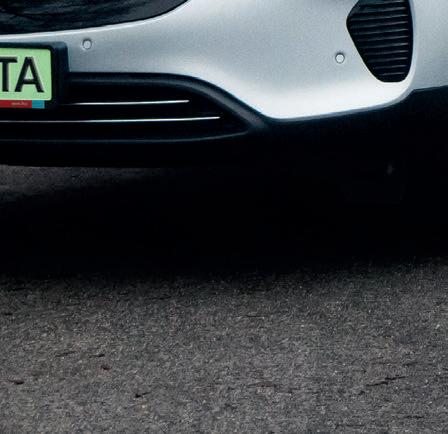





















Give a new style to driving and enjoy the benefits of an electronic car fleet. You can choose from 11 different models of electric vehicles, including vans, small or normal-sized passenger cars, or even high-end vehicles. The service is available for a monthly fee plan with no initial lump sum payment. Pitch into it for pure success: request our offer today! Choose an electric car for your business eon.hu/eflotta E.ON E-Fleet: to suit your business and your own needs 4_104_E_flotta_kampany_2020_280x360mm.indd 1 2020. 03. 10. 16:03 dt 2020march.indb 17 2020. 03. 16. 11:44
e-mobility
DRIVEN BY A PASSION FOR A CLEANER TOMORROW
E.ON HUNGARY IS DEDICATED TO TAKING E-MOBILITY TO THE NEXT LEVEL
It may still be the early days, but the electric vehicle revolution is firmly underway in Hungary. As e-mobility gradually becomes the norm in more developed countries, E.ON Hungária is working to spearhead the transition to a cleaner and sustainable transportation.
Climate change and the quest to preserve the environment are transforming the way we live, work and relax. Mobility is no exception and the penetration of electric vehicles (EVs), charging stations and the shared economy are all drivers of the switchover to more sustainable forms of transportation. As an electricity service provider with a clear goal to improve people’s lives it has been natural for E.ON to develop an e-mobility strategy, says Zsolt Jamniczky, a member of the board at E.ON Hungária Zrt. Following the German giant’s 2014 decision to shift its focus from energy generation to maintaining and developing power distribution networks and delivering customer solutions centered on sustainable energy, E-mobility has emerged as a key element of E.ON’s customer solutions, alongside solar panel sales and maintenance. The company started building e-mobility infrastructure and offers services centered on and around EV technology across Hungary.
Social license to operate
Spearheading the transition to a sustainable energy world is a key mission for E.ON in Hungary. “A company can only operate successfully if its business model is widely accepted by its customers and society; in other words, it possesses a social license to operate. Without this a business is doomed to fail,” Jamniczky tells Diplomacy&Trade.
In the case of E.ON, its core business of electricity provision and sustainability are deeply interlinked, which materializes in the so-called 3 Ds: decentralization, digitalization, de-carbonization, the executive notes. Decentralization is taking place in the shape of individuals producing their own electricity via solar panels, biomass or geothermal energy. Digitalization comes almost automatically, as the service provider has to integrate these decentralized production units into the system, keeping the system in balance and providing further benefits to the customers, for example by operating energy communities. “The 3Ds, while complementing one another,
all serve sustainability,” according to Jamniczky. Sustainability will be the key in the future: only companies that work together with their partners and clients to find green solutions will be successful.
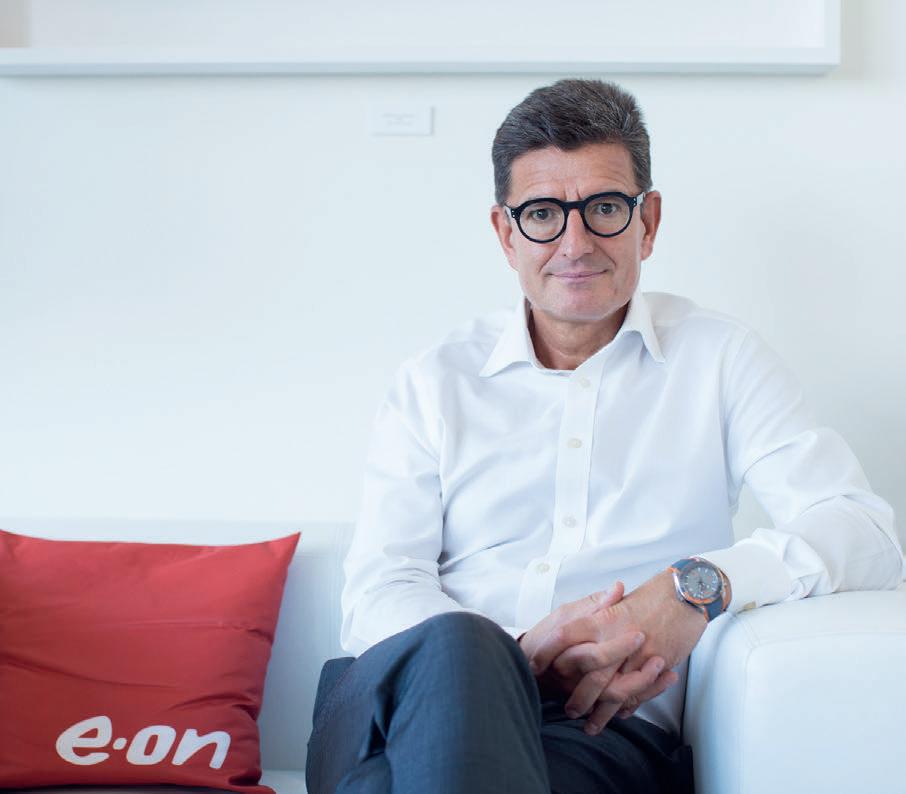
Ensuring e-mobility is a pleasant experience
The executive stresses that e-mobility is an entire ecosystem. Although the mass production of EVs took off in the 2010s, without the necessary infrastructure –namely charging stations – these cars would not be usable. “Driving is meant to give us comfort and in the case of e-mobility there are some physical barriers to this comfort, mostly with respect to charging,” Jamniczky says. With a view to removing these barriers, E.ON operates 150 charging stations around the country and its objective is to more than double this figure by the end of 2021. The company entered into an agreement with German retailer Aldi to place a charging station in each Aldi carpark in Hungary, meaning about 100 locations.
“E-mobility is still a more expensive solution compared to traditional means of transport, due to the price of the vehicles, and this is likely to remain so for a while. Therefore, e-mobility has to provide a seamless customer experience similar to conventional transport, and as an e-mobility operator, it is our dedicated goal
to deliver such an exceptional experience in the future. We must ensure that charging stations are operational at all times and the payment and settlement process is super customer friendly. For instance, an E.ON client should not pay separately for home charging and for using our charging stations, these should all be settled in the monthly bill,” Jamniczky explains.
Solutions for the future
E.ON entertains ambitious plans when it comes to serving retail clients and is working on offering complex service packages and discounts. The executive mentions the solar cloud, a solution that is already in use in Germany and the company is looking into the viability of the solution in Hungary, as well. “The solar cloud essentially means that I can use the excess energy produced by the solar panel placed on my house at any charging station operated by E.ON. Solutions like these help improve the customer experience and increase the allure of e-mobility.”
Technological developments point to a range of new solutions in this space and many pilot projects are already underway. One such project is the so-called vehicle to grid solution, which enables the charged power to be made available for the grid from car batteries to balance variations in energy production and consumption. With the vehicle-to-grid technology, a car battery
can be charged and discharged based on different signals. Since at any given time a significant proportion of cars are parked, the batteries in electric vehicles could be used to let electricity flow from the car to the electric distribution network and back. “The issue here is making these solutions mainstream and this requires a critical mass of users for it to be economical for service providers. In places where e-mobility penetration is very high, like the Nordic states and certain western European countries, these are already real operational systems,” Jamniczky says.
Ownership is not everything
Although the number of EVs registered in Hungary still lags behind more developed countries in Europe, the trend is encouraging. In 2020, the number of EVs sold in Hungary is projected to reach 12,000 and by 2025 this figure is set to rise to around 40,000. The supply of such cars will undoubtedly increase exponentially and so will the distance these vehicles can cover without charging, according to the executive. “We are at a moment in time when personal transportation is being revolutionized in front of our eyes as e-mobility is emerging parallel to the proliferation of car sharing services. The average utilization rate of cars or other means of transportation is around 20-30% and sharing leads to a considerable reduction in the carbon footprint. Today’s younger generation is not interested in owning things, they are the offspring of the sharing economy,” he explains. A case in point is E.ON’s Blinkee.city service, an electric scooter rental on a pay-per-minute basis, which targets the younger generation and has become a much bigger success with users than the company had initially expected. The service is available in Budapest and Pécs and expansion to further cities is planned.
Solutions for corporate clients
Besides making e-mobility an alluring option for individuals, E.ON also concentrates on offering such services to corporate clients. The company’s e-fleet package is a one-stop-shop solution that offers business customers a leasing solution for the cars, including all necessary maintenance, charging facilities and all related services upon request. E.ON currently has 100 fully electric vehicles in operation and the portfolio includes a wide range of cars from popular Nissan models to Audis and other higher-end vehicles. The fleet is targeted to double this year. Sustainability is a business model in itself and it offers companies a competitive advantage over their competitors that only use diesel cars or rely extensively on plastic packaging, according to Jamniczky. “These are factors that today’s consumers and regulators take into consideration to an increasing extent. We work to enable our customers to ride the waves of technological developments and stay ahead of the game. Meanwhile, our own objective is not to watch the brake lights of our competitors but rather to spearhead this transition to sustainability and a cleaner and better tomorrow,” Jamniczky notes.
MARCH 2020 |DIPLOMACY & TRADE| www.dteurope.com
18 photo by DÁVID HARANGOZÓ
dt 2020march.indb 18 2020. 03. 16. 11:44
All-New










Car shown is the Honda e Advance Pack in Platinum White Pearl – Economy & Emissions figures: Power consumption in kWh/100: combined 20-18; CO2emission combined (g/km): 0. Efficiency: A+. The Honda e is a battery electric vehicle requiring mains electricity for charging. Zero emissions while driving. Electric range figures may not reflect real life driving results, which will depend upon a number of factors including the starting charge of the battery, accessories fitted (post-registration), variations in weather, driving styles and vehicle load. Power, emissions, fuel consumption and range data is preliminary data only and may not reflect the official (or final) figures for the production vehicle. This data is provided for information only and you should not rely on it for comparability or other purposes – final/official figures will be made available prior to any customer order.





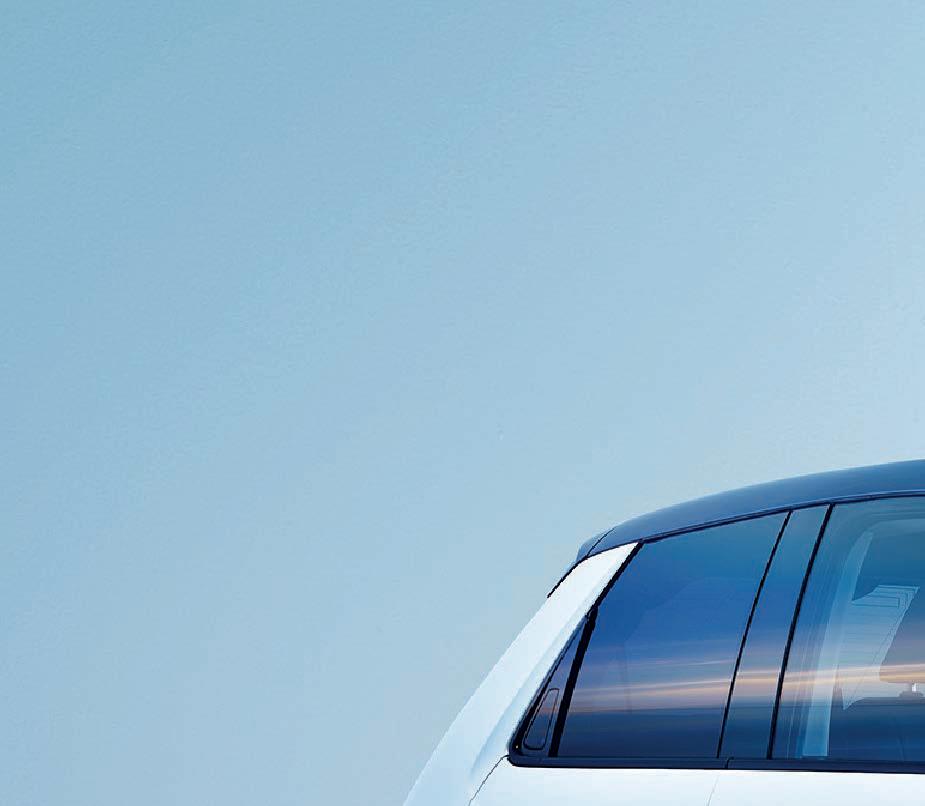
This is not a prototype dt 2020march.indb 19 2020. 03. 16. 11:44
e-mobility
INNOVATIVE THINKING FOR SAFETY
TÜV RHEINLAND’S HUNGARIAN UNIT HAS A DISTINCTIVE PLACE WITHIN THE GROUP

battery development and IT communication to make chargers smart and usable without a power grid. A few years ago, nobody thought of such cooperation. In case of a hair dryer or an iron, it is not critical if or how it is connected to the Internet, or how the energy needed to operate it is stored, developing a car charger needs the expertise of a mechanical engineer, an electric engineer, a software programmer and a chemist to achieve the best possible solution of letting electricity flow into the battery.”
Safety above all
e Germany-based international rm TÜV Rheinland, established in 1872, is one of the world’s leading companies for testing, inspection and certi cation services as well as training in these areas. Along with development companies, TÜV Rheinland has been involved in electric mobility for several years.

As Gergely Hidas, Business Stream Coordinator for Product Testing and Certification at TÜV Rheinland InterCert Ltd., the Hungarian subsidiary of the TÜV Rheinland Group, points out to Diplomacy&Trade, “on the international level, we cooperate with development companies in formulating the system of requirements in e-mobility. The manufacturers, the state and EU level regulators, and those who will test the products – they all sit on the same committee and consider all viewpoints before coming to a conclusion not just for the particular innovation in question but also regarding the direction of development and the risks to be handled.”
A distinctive testing place
TÜV Rheinland AG tests the critical and innovative elements of e-mobility infrastructure around the world with the Hungarian unit playing a special role. Gábor Kovács, Business Field Manager - Commercial at TÜV Rheinland InterCert Ltd., recalls the importance of having purchased the Hungarian Institute for Testing Electrical Equipment (MEEI), back in 2004, for its
competence of testing electrical components. “It very much fitted our scope as it was evident that if we knew something about cables, plugs, safety equipment, we should start the inspection of car battery chargers by inspecting all these parts? It was also much simpler to test the chargers from the parts level. It gave us an advantage as other testers had to break the product down into parts for inspection. Within the TÜV Rheinland
Group, e-mobility inspection is divided into regions. Pieces of European standard equipment are tested mainly here in Hungary as well as in Germany, and there is also testing in China and Japan for their respective standards.” Gergely Hidas highlights that e-mobility is a strong driving force for the economy because basically everybody likes this new technology, everybody would like to invest in it – and use it safely, as well. “That is when we come in. Just like in the past 130-150 years, a new technology can only be put on the market once it has reached a safety level acceptable for society. Certifying that safety level is what we do here at TÜV Rheinland in Hungary every day. We are a distinctive laboratory for testing hardware and software – we have to make sure that things work safely under all circumstances the users could possibly be in.” Given the novelty of the technology inspected, the testers are on mostly uncharted territory, so they themselves have to apply revolutionary methods. As Gábor Kovács puts it, “this requires different branches of industry to join forces, such as battery charging and electricity networks with
He stresses that “even as private individuals, we immediately look for the safety certification label on what we purchase – be it a climbing frame for a child or a hair drier. Our experience is that the acceptance of a new technology depends on how much people desire to have it – even if it does not have the acceptable level of safety certification. However, what is on the shelves is already safe because of the expertise of companies like TÜV Rheinland that guarantee the proper level of safety. Our company has been present in Hungary for over thirty years, and our driving principle has been ‘safety above all’ for three decades.” According to Gergely Hidas, it is also an issue of trust. “If we, at TÜV Rheinland certify the safety of a product, people can be sure that it means an increased level of safety. That is what clients expect from us. In Europe, there is a quite liberal system of putting products on the market as the manufacturer, itself can declare that the item meets the required standards. When a manufacturer comes to us for certification, at stake is the trust in us as a company that we have the best possible technical background to be able to issue a certificate based on what we have found. So, ‘safety above all’ is what we seek all the time.” He adds that the company needs to make huge investments in order to examine new technologies and keep pace with them: new tools, new methodologies – these all cost EUR millions. “An investment of millions of euros must be operated in a way that it remains profitable. There are technologies where the methods of examination are not as mature or exact as in the case of a charging cable, for instance, so, innovative thinking is required. Since we have to make these risk analyses together with the manufacturers, we have to prove to them that their particular product is safe because of this and that.”
From hair clipper to spaceship
Gábor Kovács highlights another advantage of TÜV Rheinland, that is, “our engineers and the brainpower, the knowledge they possess. They are forced to leave their comfort zone day by day. While a manufacturer produces one type of product every day, our people examine a bus today but tomorrow, it is a charger cable, then a spaceship and then a hair clipper. They are able to do this because they have a global background at their disposal: they can receive information from – and share experiences with – TÜV testers working in 55 other countries.”
In summary, Gergely Hidas adds that TÜV Rheinland InterCert Ltd. employs about 200 people in Hungary and their expertise must cover all sorts of products existing in the world – ‘from hair dryers to spaceships’. “200 people cannot have expertise in everything but, fortunately, we can rely on the knowledge of 20,000 colleagues worldwide.”
MARCH 2020 |DIPLOMACY & TRADE| www.dteurope.com
20 photos by DÁVID HARANGOZÓ, PÉTER FÁTH
dt 2020march.indb 20 2020. 03. 16. 11:44
Safety above all
TÜV Rheinland = testing, inspection, certification
Services:
Academy, Health and safety, Industrial segments: power plants, renewables and manufacturing sites, Products and components: mechanical, electrical and performance testing, inspection and certification, Management system certifications
Expertise in e-mobility:

Type tests: Autonomous vehicles’ systems, electric vehicles (including: passenger cars, public transportation, commercial vehicles, electric motorcycles, EPAC bicycles, Segway, etc.), Testing and inspection: Chargers, Batteries, Sensors and control equipment, LED lighting equipment, Wireless equipment (RED, EMC)
Special trainings for automotive industry: E-mobility safety trainings (from users to developers) and IATF16949, VDA, FMEA, MSA, APQP/PPAP, 5S, 8D
www.tuv.com T ÜV R heinland I nterCer t Kft. tu v@hu. tuv .c om
dt 2020march.indb 21 2020. 03. 16. 11:44
Japanese Emperor Birthday
The Ambassador of Japan to Hungary, Kuni Sato, welcomed guests to a reception and dinner in the ballroom of the Budapest Marriott Hotel to celebrate her country’s national day, which marks the birthday of the new emperor, Naruhito, February 23. The event looked back at last year’s celebrations of 150 years of diplomatic relations between the two countries and ahead to the 2020 Tokyo Olympic and Paralympic Games.
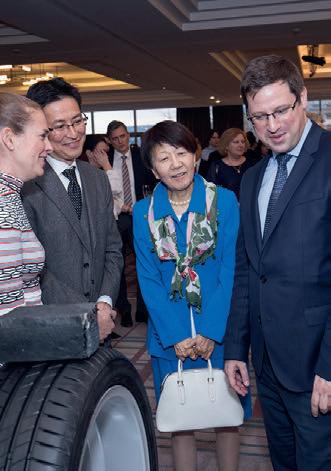
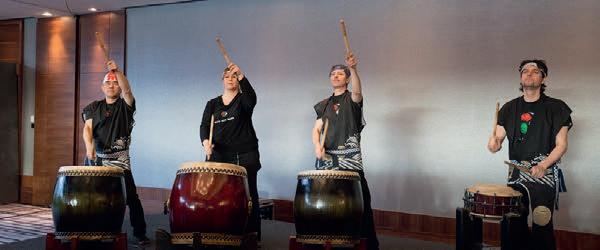
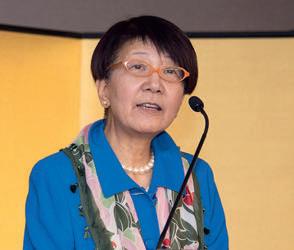
Argentine Farewell Party
The Ambassador of the Argentine Republic, Maximiliano Gregorio-Cernadas and his spouse, Cecilia Scalisi de Gregorio-Cernadas held a farewell party at the Tildy Palace (Residence of the Embassy) in Budapest, in early February, a few days before their departure for Buenos Aires as the Ambassador’s three-and-ahalf year tenure expired in the Hungarian capital.

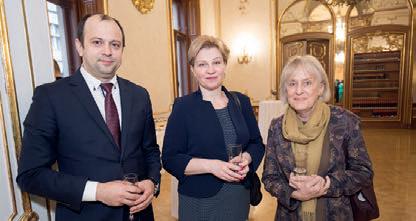
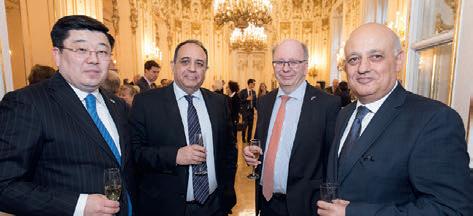



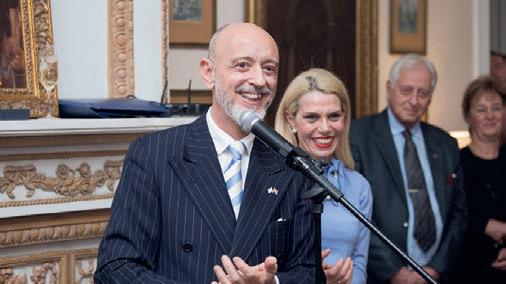
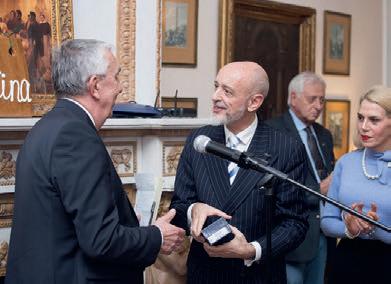

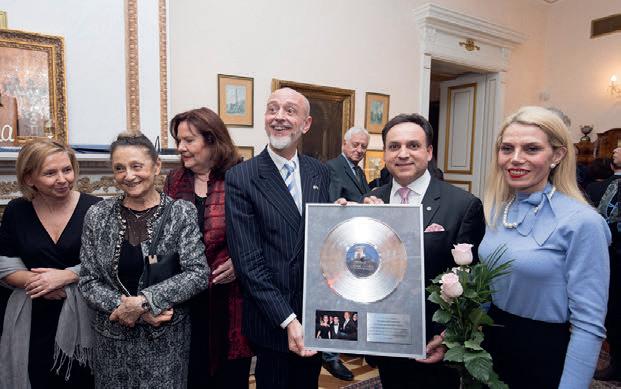
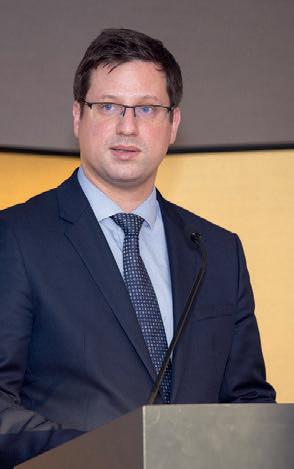
Lithuania National Day
To celebrate the National Day of the Republic of Lithuania and the 30th anniversary of the restoration of the country’s independence, the Ambassador of the Republic of Lithuania, Vytautas Pinkus held a reception for fellow members of the diplomatic community and other guests in the Wenckheim Palace (currently the Ervin Szabó Library) in Budapest. Special entertainment was a skrabalai (a Lithuanian folk tuned percussion instrument consisting of trapezoid-shaped wooden bells) performance by Lithuanian artist Regimantas Šilinskas.

New Ambassadors
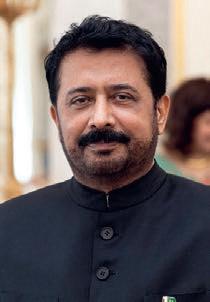
Four new ambassadors accredited to Hungary presented their credentials to Hungarian President János Áder this February at the Sándor Palace in the Buda Castle (pictured from left to right): Muhemmed Aejaz from the Islamic Republic of Pakistan; Eloi Laourou from the Republic of Benin; Hamid Rezi Nafez Arefi from the Islamic Republic of Iran and Ali Mokrani from the People's Democratic Republic of Algeria.
Portuguese Farewell Reception
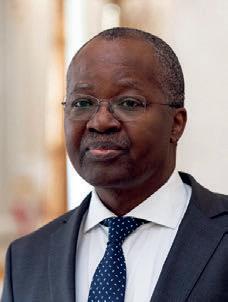
The Ambassador of Portugal, Maria José Morais Pires and her husband held a farewell reception with Portuguese culinary specialties at their Residence of the Embassy in the Buda Hills in February. She had represented her country in Budapest since April 2015.


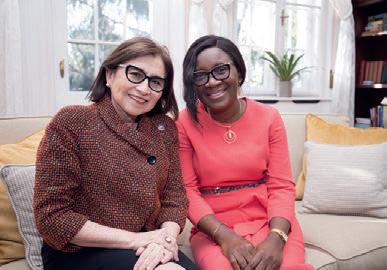

MARCH 2020 |DIPLOMACY & TRADE| www.dteurope.com
22
society
photos by DÁVID HARANGOZÓ, ZSOLT SZIGETVÁRY/MTI dt 2020march.indb 22 2020. 03. 16. 11:45
society
AMBASSADOR SUMMIT
AN EVENING OF GASTRONOMY AND HOSPITALITY FOR THE DIPLOMATIC COMMUNITY


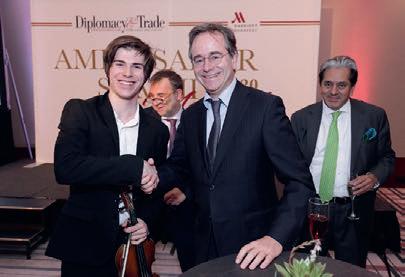
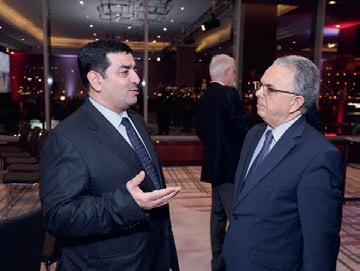



Diplomacy&Trade Publisher Peter Freed and the General Manager of the Budapest Marriott Hotel & Marriott Executive Apartments, Arne Klehn hosted members of Budapest’s diplomatic community at the rst Ambassador Summit.

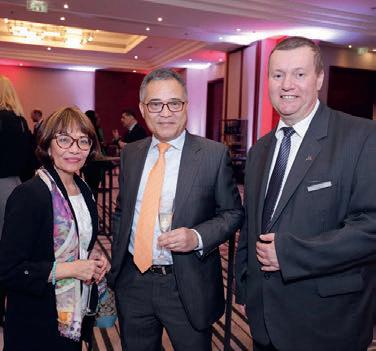


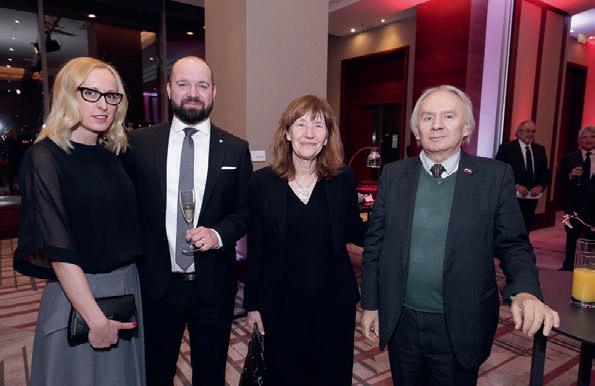
Diplomats gathered this February for an evening of discussions, gastronomy and hospitality at the Budapest Marriott Hotel. Arne Klehn, Mariott General Manager, greeted the guests in the newly renovated hotel before Peter Freed presented his media and services portfolio. In addition to the English language monthly Diplomacy&Trade, this includes the hospitality website Best of Budapest & Hungary that holds
an award gala every year for the best of this profession, the event organizer branch ‘I LIKE MICE Hungary’ and the corporate limousine service AtourZ. The Publisher also thanked the most important corporate partners who cooperated with the publication of Diplomacy& Trade, including 12 country focus supplements and one special country issue, in the past year.
Analyst for political affairs at Diplomacy&Trade, Dr. Tamás Magyarics, a former Hungarian

Ambassador to Ireland and currently a university professor in Vienna, prepared a video message for the audience concerning the current state of affairs in what he called the “single most important question for the United States and perhaps the world”: who the next US president will be. He recognized that Donald Trump does not have a real challenger within his party, which means that he will be the Republican Party nominee at the elections on November 3. On the
other hand, the Democrats have narrowed their field of candidates. The peak of the Democratic primaries in early March, has 14 states including populous ones like California and Texas, participating. However, the candidate may not be clear until the National Convention in July. Of course, the real question is who wins the presidential elections in November and takes office on January 20, 2021.
The cultural program of the evening was provided by two talented, international award-winning teenagers from the Hungarianfounded classical music television show ‘Virtuosos’: pianist Kármen Stephany Boateng and violinist Zoltán BácsySchwartz who performed evergreen pieces by Liszt, Ravel, Kodály and others.

The young artists’ performance was followed by a buffet feast featuring cuisine from around the world as well as networking opportunities for participants.

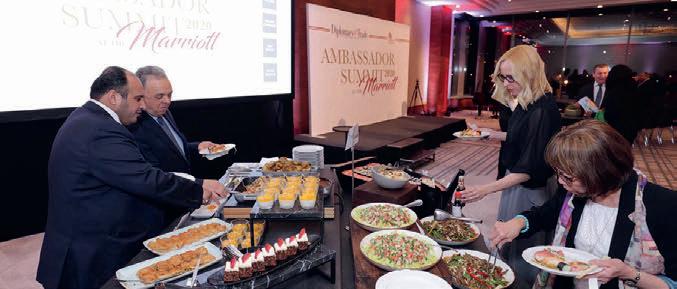
www.dteurope.com |DIPLOMACY & TRADE| MARCH 2020 23 photos by DÁVID HARANGOZÓ
dt 2020march.indb 23 2020. 03. 16. 11:45
LARA FABIAN CONCERT






MAY 28, BUDAPEST ARENA
With more than 20 million albums sold worldwide, Lara Fabian returns with her ‘50 World Tour’. The Canadian-Belgian singer, songwriter, musician, actress and producer is one of the most successful European artists of all time, who sings in nine languages: French, English, Spanish, Portuguese, Italian, Hebrew, Flemish, German and Russian. She was only 18 when her single ‘Croire’ sold 500,000 copies in Europe. Lara’s second album, ‘Carpe Diem’ reached triple platinum and received many awards from several countries, including Best Female Singer of the year. The upcoming tour will be a celebration of Lara’s upcoming 50th birthday, with a special show celebrating her 30-year career with all of her songs from 14 studio albums, including her major hits. www.livenation.hu
THE ART OF BANKSY UNTIL APRIL 30, TESLA LOFT

After Istanbul, Amsterdam, Antwerp, Melbourne, Auckland, Toronto, Berlin, Bucharest, Cluj-Napoca and Paris, Banksy, the world's most famous graffiti artist's works are on display in Budapest. Banksy started his career as an illegal graffiti artist at the beginning of the '90s – his activity generated high interest of people recognizing his works on the streets but also of art professionals. Although he has not presented his works in galleries, since 2000, alongside Steve Lazarides (his then manager who helped him to start his career), he has been creating a series of paper and canvas prints, in addition to graffities. Organized by the Godot Institute of Contemporary Art at Tesla Loft, the Art of Banksy Exhibition presents the art of the ‘unknown genius’ through about 70 works. The exhibition does not intend to follow any timeline based thematic, but it rather concentrates on presenting the main topics of Banksy’s art. The first section presents the artist’s attitude (he also had a history of participating in punk movements) towards the actual British political power structure, while the second section shows Banksy’s favorite animal motives. Another part of the show presents his mission against wars and his sarcastic, black humor, depicting our consumer society as a parody. The Budapest show also presents an Augmented Reality (AR) museum guide application that evokes the graffities and even the walls that were painted by Banksy at their original location – with the help of this tool, visitors can literally wander around in Banksy’s world. www.theartofbanksy.hu
OLDTIMER SHOW 2020
APRIL 17-19, HUNGARIAN RAILWAY MUSEUM

Oldtimers represent the true value of craftsmanship and preserve memories of the car industry. It's best to admire them at this festival that is, according to organizers, one of the largest veteran vehicle exhibitions in Central Eastern Europe, with 500 vehicles on show, including a very unique 104-year-old hybrid car this year, named Woods. The annual event, which celebrates its 15th anniversary in 2020, offers a large outdoor and indoor space (100,000 square meters) for exhibitors and visitors alike, with interactive and family programs, including steam engine rides, velo-rails or railbikes, a train rotating platform, railcars and an omnibus. There will be farm animals and kids are also invited to play in the bouncy castle and enjoy face-painting. A gastro-street will offer Hungarian specialties. For those with an eye for beautifully restored veteran, antique, nostalgic and classic vehicles, this event is a must. www.oldtimershow.hu
BODIES 2.0 – THE UNIVERSE WITHIN


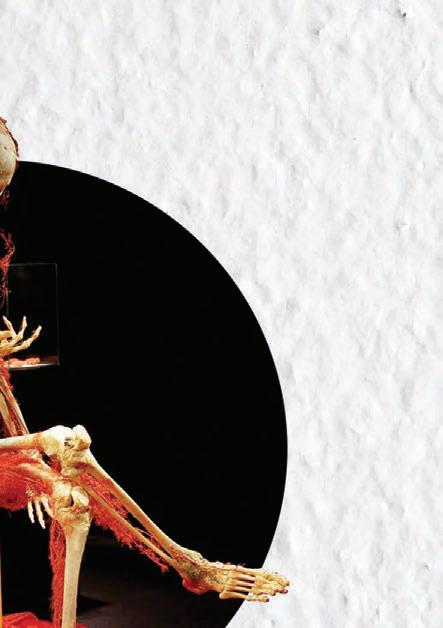



UNTIL MAY 31, BÁLNA





This is a scientific, educational exhibit comprised of appr. 200 specimens including whole body specimens that have been preserved using a method known as polymer impregnation. Bodies 2.0 literally as well as figuratively goes ‘under the skin', revealing the complexity of the human body and allowing visitors an up-close, 3-dimensional look at their inner make-up. Rather than using models of the human body, this exhibition uses real human bodies to provide the general public with a look at what normally only doctors and scientists can see first-hand. The goal of the exhibition is for visitors to leave with a deeper understanding of their own body’s form and function and a stronger appreciation for staying fit and healthy. www.bodies-kiallitas.hu

MARCH 2020 |DIPLOMACY & TRADE| www.dteurope.com what s on 24 photos by LIVE NATION, BANKSY, BODIES
dt 2020march.indb 24 2020. 03. 16. 11:45
40TH BUDAPEST SPRING FESTIVAL
APRIL 3-19 AT MULTIPLE LOCATIONS IN BUDAPEST

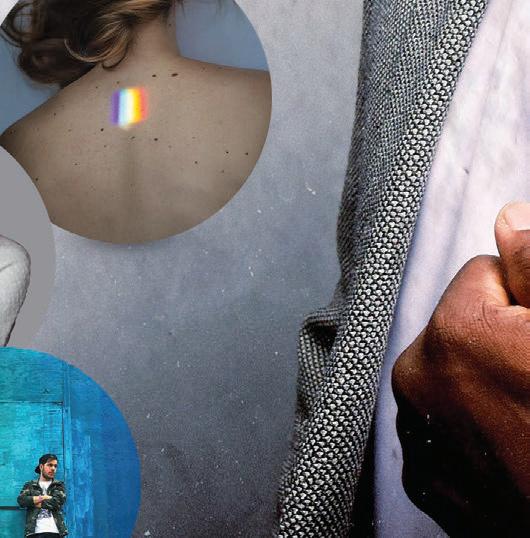


This festival has developed into one of Europe’s major cultural events offering opera, classical music, jazz, world music concerts, contemporary circus, theatrical performances and visual arts, performed by the best Hungarian performers and world stars. The 40th Budapest Spring Festival presents Philippe Herreweghe and the Collegium Vocale Gent, György Kurtág, Kristine Opolais, Lawrence Brownlee, the Ballet Company of Győr and Félix Lajkó, Sergei Nakariakov and the Dohnányi Orchestra Budafok. Ji, Ton Koopman and the Amsterdam Baroque Orchestra, Lloyd Newson (DV8 Physical Theater) and the Ballet Rambert. The annual event series continues to broaden its offerings by involving the leading cultural institutions of the city: in addition to Müpa Budapest and Liszt Music Academy, this year’s venues include the Akvárium Klub, A38 Ship, Budapest Music Center, Duna Palace, Ludwig Museum, Hungarian National Museum, Kiscelli Museum, Pesti Vigadó, Trafó and Várkert Bazár (Castle Garden Bazaar). www.btf.hu
HARRY STYLES



MAY 31, BUDAPEST ARENA
English-born singer and teen heartthrob Harry Styles rose to fame as one of the five members of the boy band One Direction. He launched his solo career in 2016 and made his acting debut in the 2017 film 'Dunkirk'. Born in Bromsgrove, Worcestershire, England, on February 1, 1994, Harry Styles first sang with a band in a school competition. In 2010, he performed on the television show 'The X Factor', where the judges combined him with four other young male singers to form One Direction. The boy band became a pop music sensation, delivering hits like 'Best Song Ever' and 'Story of My Life' through five immensely successful studio albums. Styles then made a solo splash in 2017 with his debut single, 'Sign of the Times', and a self-titled album. Fans then waited another two years for his next single, which came in October 2019 with the soulful 'Lights Up'. Shortly before the release of his solo album ‘Fine Line', the singer announced plans for his 2020 Love On Tour, which will begin in April in the UK and will travel across Europe and North America before concluding in Mexico in October, stopping in Budapest in May. The opener of his concert will be the rising pop star King Princess. www.livenation.hu

ST. PATRICK’S DAY PARADE

MARCH 22








AKVÁRIUM CLUB, ERZSÉBET SQUARE
Come along and “Be Irish for the day!” organizers invite everyone to the greenest parade in Budapest. Green and full of smiles. This event will see Ireland’s native countrymen and friends of Ireland in Budapest take to the streets dressed in leprechaun attire. www.stpatricksdaybudapest.com



25 photos by LIVE NATION, DEPOSITPHOTOS.COM, EMESE KISS, LÁSZLÓ EMMER, BENJAMIN KISS, SHERVIN LAINEZ www.dteurope.com |DIPLOMACY & TRADE| MARCH 2020 what s on
dt 2020march.indb 25 2020. 03. 16. 11:45
gastronomy

Viator Apátsági Étterem és Borbár
9090 Pannonhalma, Vár 1. +36 96 570 200 • +36 30 213 6000 etterem@viator.co.hu www.viator.co.hu
Paris Budapest Restaurant & Bar
1051 Budapest, Széchenyi István tér 2. +36 1 235 1230 reservation@parisbudapest.hu / www.parisbudapest.hu
THE PARIS BUDAPEST RESTAURANT awaits guests, in the heart of Budapest, with French and Hungarian delicacies. Through its large windows, guests are surrounded by some of the most beautiful sights of the capital, like the Chain Bridge and the Castle of Buda. Its unique show kitchen offers guests an insight into the preparation secrets of the restaurant’s special dishes. The exceptional wine list, which symbolizes the friendship and similarity of taste between France and Hungary, allows guests to express their passion for the wines of both countries. The Paris Budapest Restaurant provides a unique culinary experience in a milieu of beauty and elegance.
RECOMMENDATION
• Vegetable consommé with root vegetables, vegetable tartare, Saint Jacques scallops
• Goat cheese, frisée salad, apple, maple syrup vinaigrette
• Rumpsteak, ratte potato, glazed carrot, pickled onion
• Saint Honoré (puff pastry, vanilla, whipped cream)
Rosenstein
1087 Budapest, Mosonyi u. 3. +36 1 333 3492 rosenstein@t-email.hu www.rosenstein.hu
THE VIATOR ABBEY RESTAURANT



AND WINE BAR strives to express the hospitality of the Benedictine community of Pannonhalma through gastronomy, combining tradition and modernity in every respect.
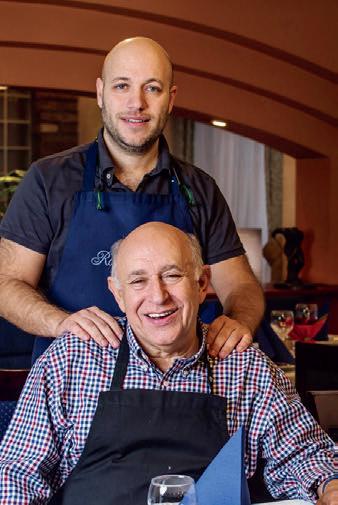

The restaurant opened in 2010 in the direct vicinity of the Archabbey Pannonhalma. The menu renews with the seasons. The high quality ingredients, purchased from the farmers in the near vicinity, is often combined with the crops of the herb and spice garden of the abbey. At Viator, not only the body, but also the soul is fed. In addition, Viator’s Omnibus offers street food, and Pausa café serves herb cookies.
RECOMMENDATION
• Tokaj aszú flavored duck liver paté with raspberry, green apple and home-made brioche
• Sugar pea cream soup with smoked salmon
• Water buffalo calf confit with mustard and sweet potato
• Cottage cheese pancake with maracuya and ‘floating island’ mousse
RECOMMENDATION
• Starters from the Rosenstein Farm
• Meat broth with matzo ball
• Stuffed neck of goose with pearl barley risotto


• Veal cheeks confit with porcini sauce
• Kaiserschmarrn
HIDDEN ON A BACK STREET near the Keleti Railway Station, this family-run restaurant is worth the unlikely detour, with its sophisticated yet casual atmosphere that embraces you in its warmth. Owner and internationally renowned Chef Tibor Rosenstein, and his son, Robi, focus on good, authentic food and friendliness. It is unpretentious, with simple white tablecloths, fresh flowers and original artwork on the walls. The Rosenstein kitchen, however, is the heart of the house with a combination of colorful Hungarian cuisine, including a few Jewish favorites.
MARCH 2020 |DIPLOMACY & TRADE| www.dteurope.com
26 photos by PIXELTASTER,
RIZSAVI,
BURGER
TAMÁS
BARNA
dt 2020march.indb 26 2020. 03. 16. 11:45
According to Google trends, interest in 'veganism' increased seven-fold in the past five years. The popularity of this special diet and lifestyle rises with our increased focus on health, wellness and sustainability. In their latest bulletin dealing with current trends in wine markets, Concours Mondial de Bruxelles (organizers of the leading European wine competition) highlighted the growing tendency of customers taking health-related issues into consideration when choosing wines.

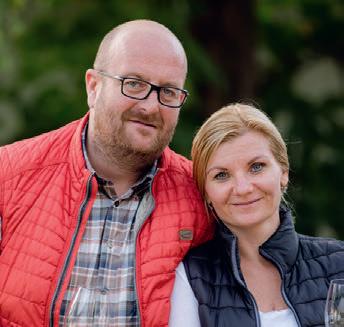
The Collins English Dictionary defines vegan as “a person who refrains from using any animal product whatever for food, clothing or any other purpose.” Wine, one would think, is perfectly suitable for vegans as it is made from grapes and yeast. Surprisingly enough, this is not always the case. So, why aren’t all wines vegan? Árpád Varga, winemaker of the Gedeon Winery is quick to answer: “It is true that wine is made from grapes, however, the process of winemaking can involve the use of animal-derived materials which in the case of traditional winemaking are related to the clarification, fining and stabilization of must. The list of fining agents includes casein, egg white, isinglass, gelatin, etc.” According to him, these agents can be perfectly replaced by plant-derived materials. This is how Gedeon Winery has been making wines for the past two years. “This is not a question of expenses or convenience; it is a direct consequence of our embrace of the principles of veganism.”
At the official launch of the Gedeon wines, Dóra Pászti-Nagy, the winery’s Sales Manager said that “first, it was our top Western European partners who suggested that vegan products would be a welcome addition to our portfolio. Soon enough, we started noticing how fast the idea of veganism was catching on in Hungary. This was when we decided to stop using animal-derived agents in our winemaking process, hoping that by doing so, we could enrich the culinary options of vegan people by offering them wines they can consume without giving up their principles.” Gedeon covers the whole spectrum of wine products: sparkling wines, whites, rosés and reds. The winery also produces little known and seldom bottled varieties such as Arany Sárfehér and Kövidinka, which are traditional in the Great Hungarian Plain where the winery is located.
WHAT’S TRENDING? VEGAN WINES!


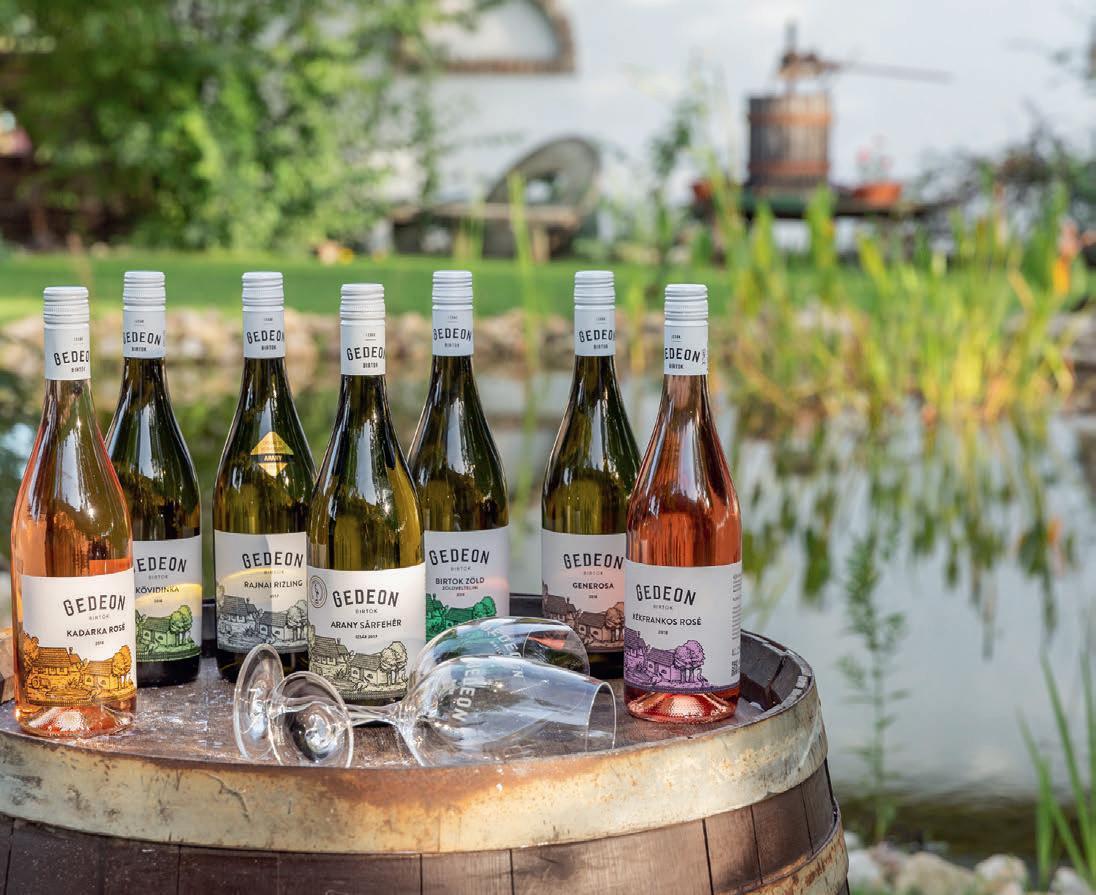

www.dteurope.com |DIPLOMACY & TRADE| MARCH 2020 27
wine
INTRODUCING
GEDEON
THE
WINERY
photos by WINEGLASS COMMUNICATION dt 2020march.indb 27 2020. 03. 16. 11:45

Charges while you recharge. The first fully electric Sportback by Audi The new Audi e-tron Sportback’s combined energy consumption: 26.3–21.6 kWh/100km, CO₂ emissions: 0 g/km. The values specified are based on the default factory setup recorded at the type approval and are valid at the time the ad is posted. The designated values were measured according to WLTP. They do not apply to individual vehicles and are not part of the information notice, but serve the purpose of comparing different types of vehicles, in accordance with the provisions of Regulation (EC) No 715/2007. These values are influenced by additional equipment, accessories, driving habits and other non-technical (e.g. environmental) factors. The motor vehicle shown in the picture is an illustration and may contain additional equipment.The information given here is not comprehensive, for further details, contact the dealership! Electric has gone thrilling. Audi_e_tron_SB_280x360_diplomacy_trade.indd 1 2020.03.03. 9:44:25 dt 2020march.indb 28 2020. 03. 16. 11:45



























































































































































































































































































































































































 Peter Freed PUBLISHER
Peter Freed PUBLISHER





 Photo: Zsolt Czeglédi, Tibor Rosta, János Vajda, Zsolt Szigetváry
Photo: Zsolt Czeglédi, Tibor Rosta, János Vajda, Zsolt Szigetváry








































































































































































